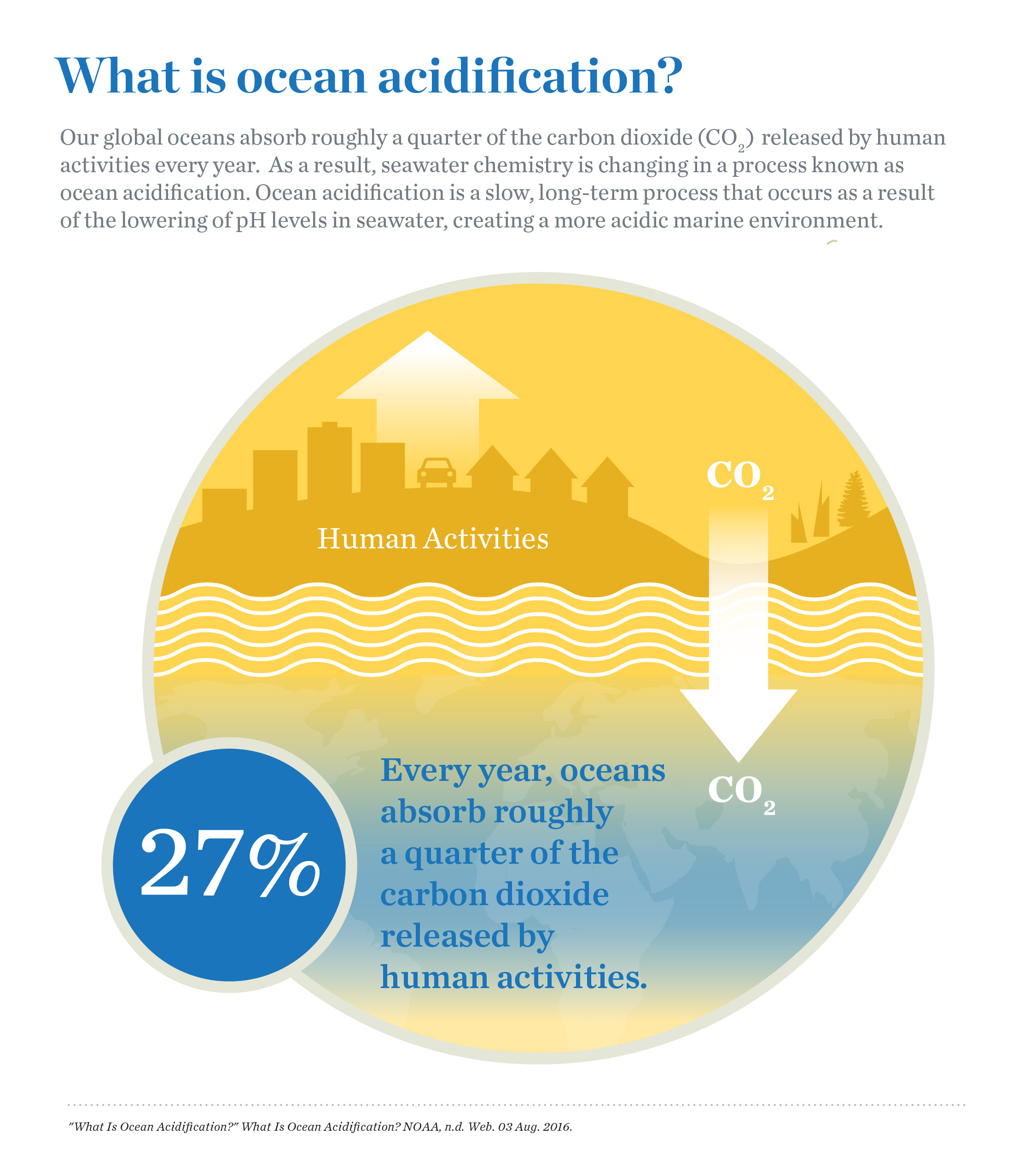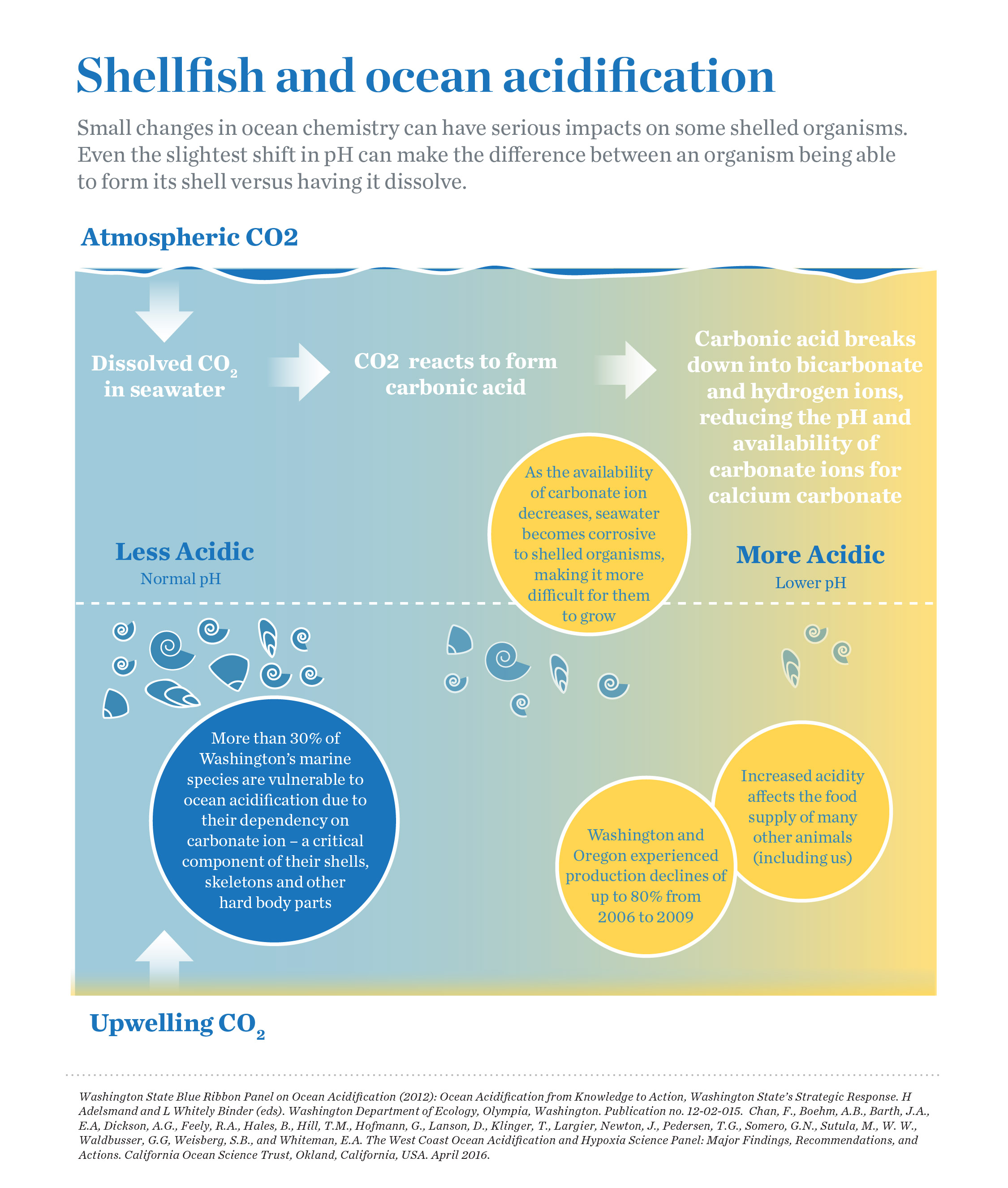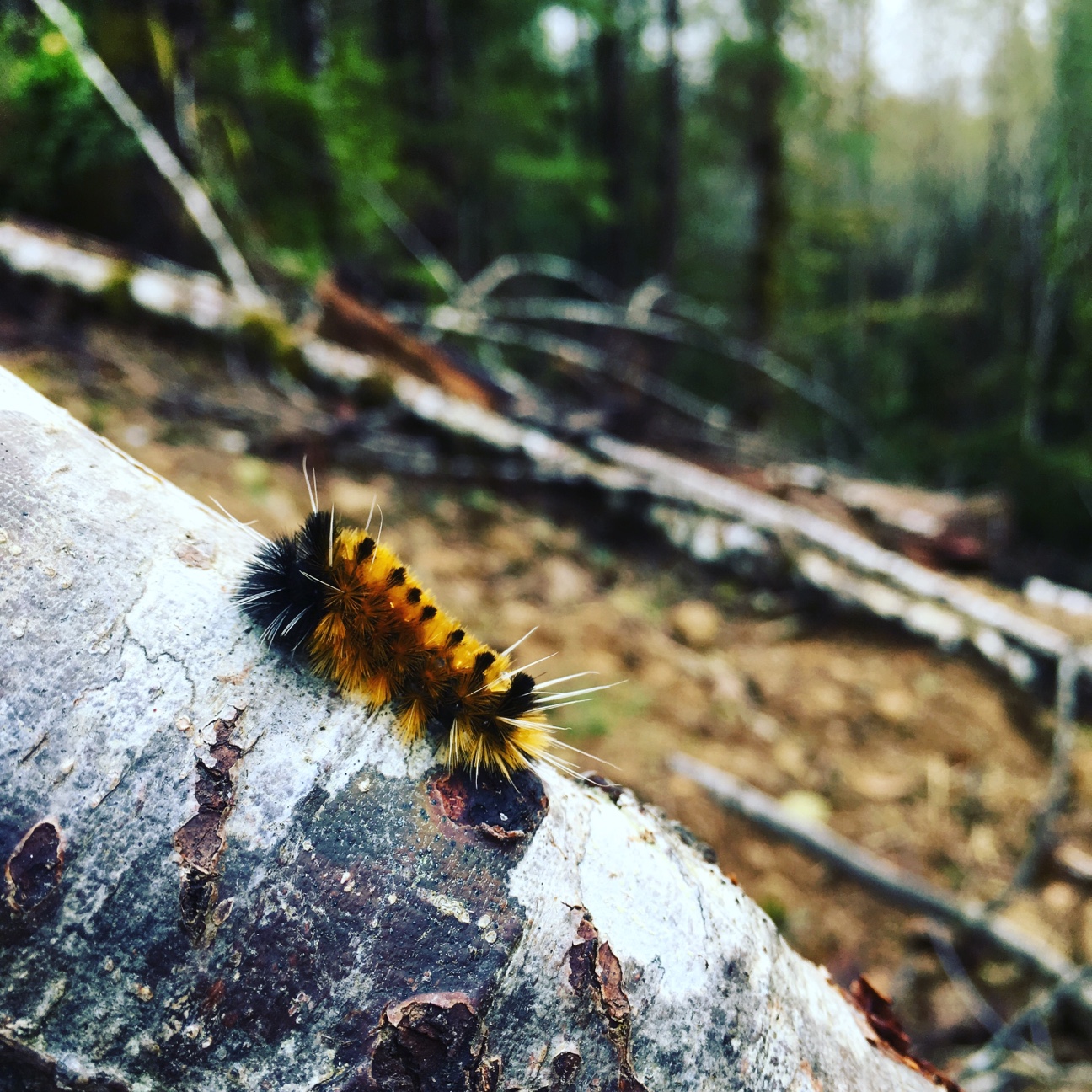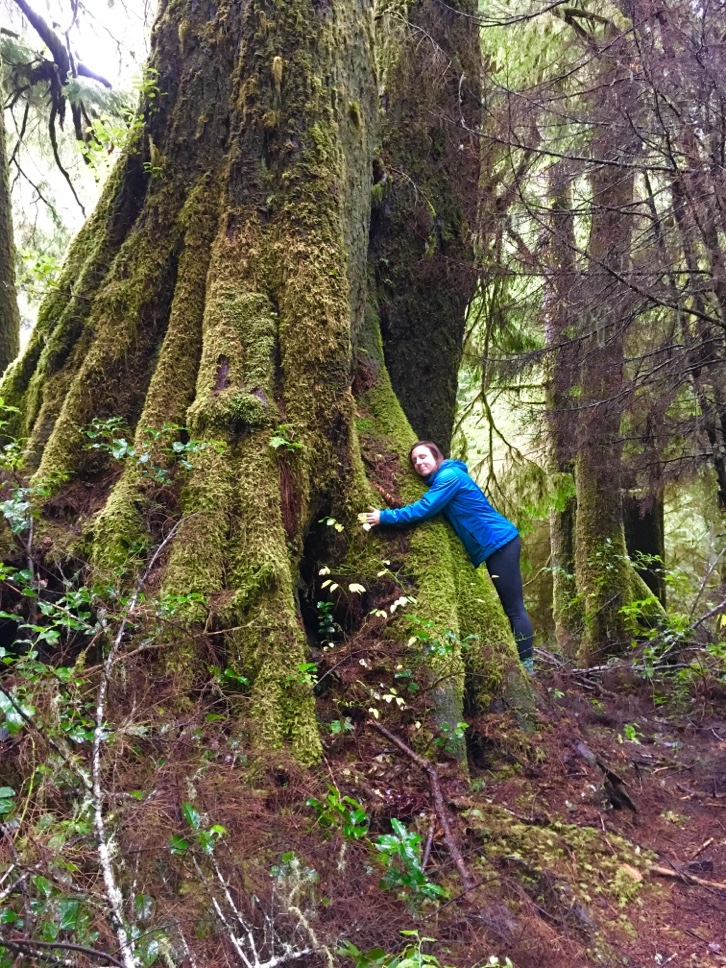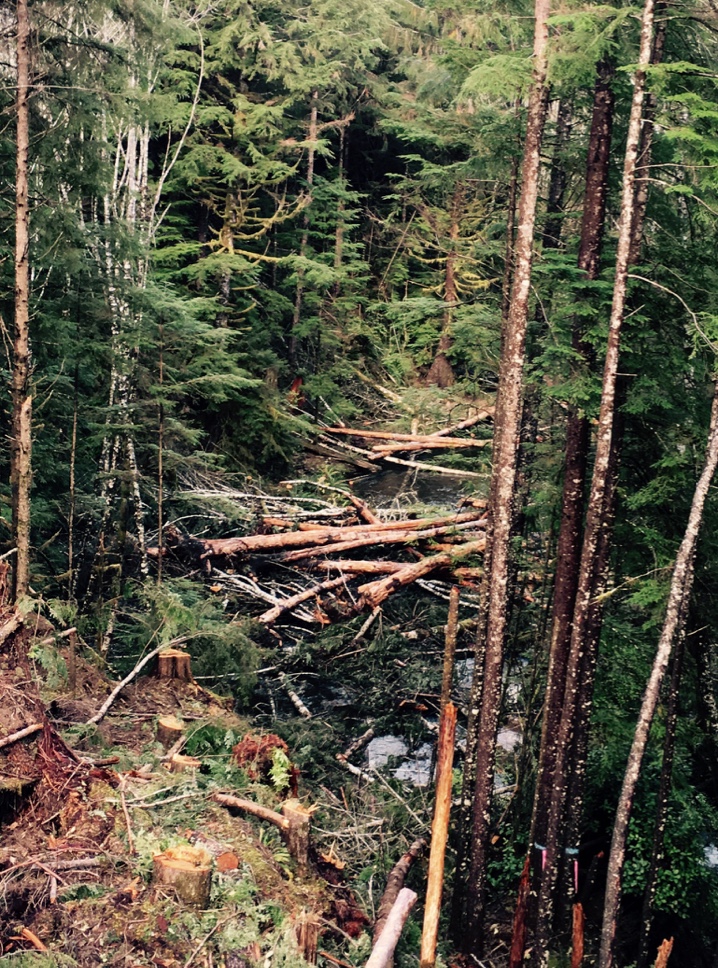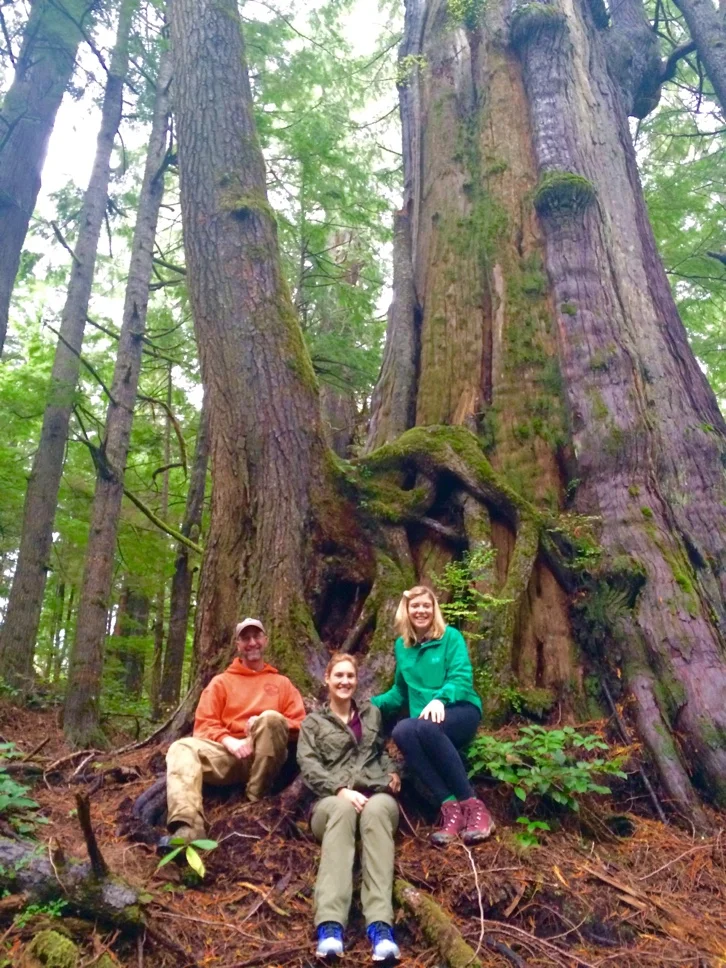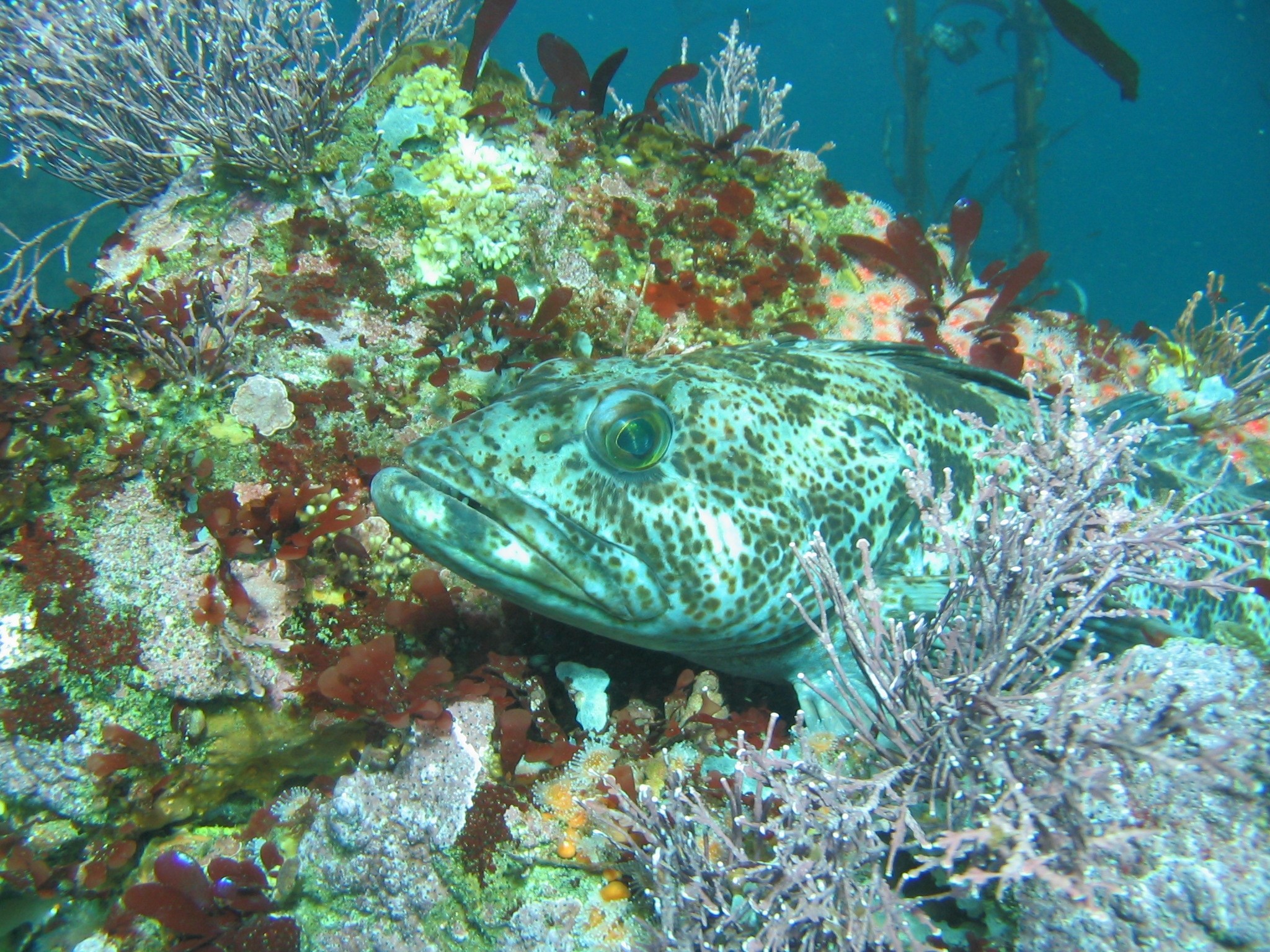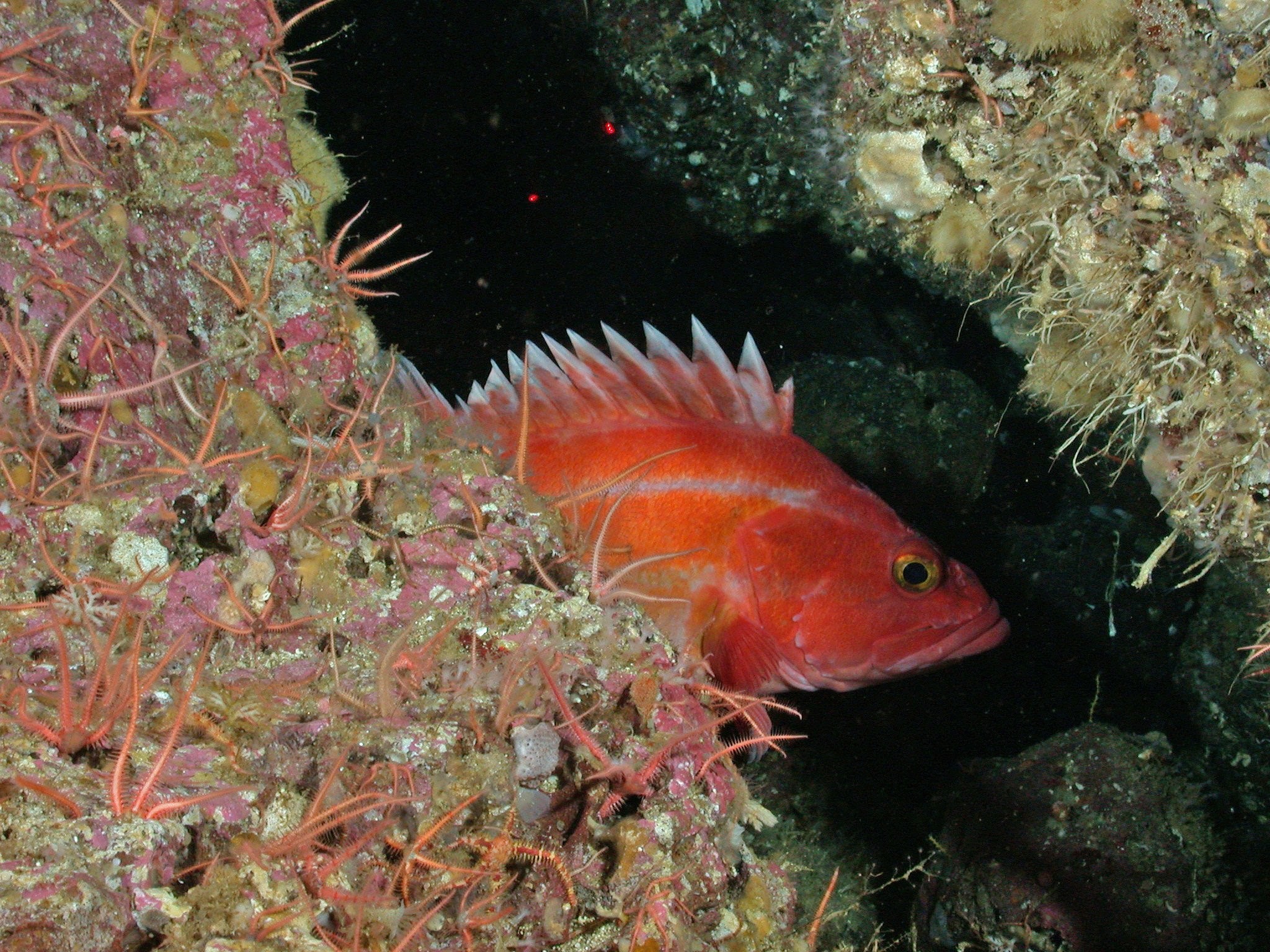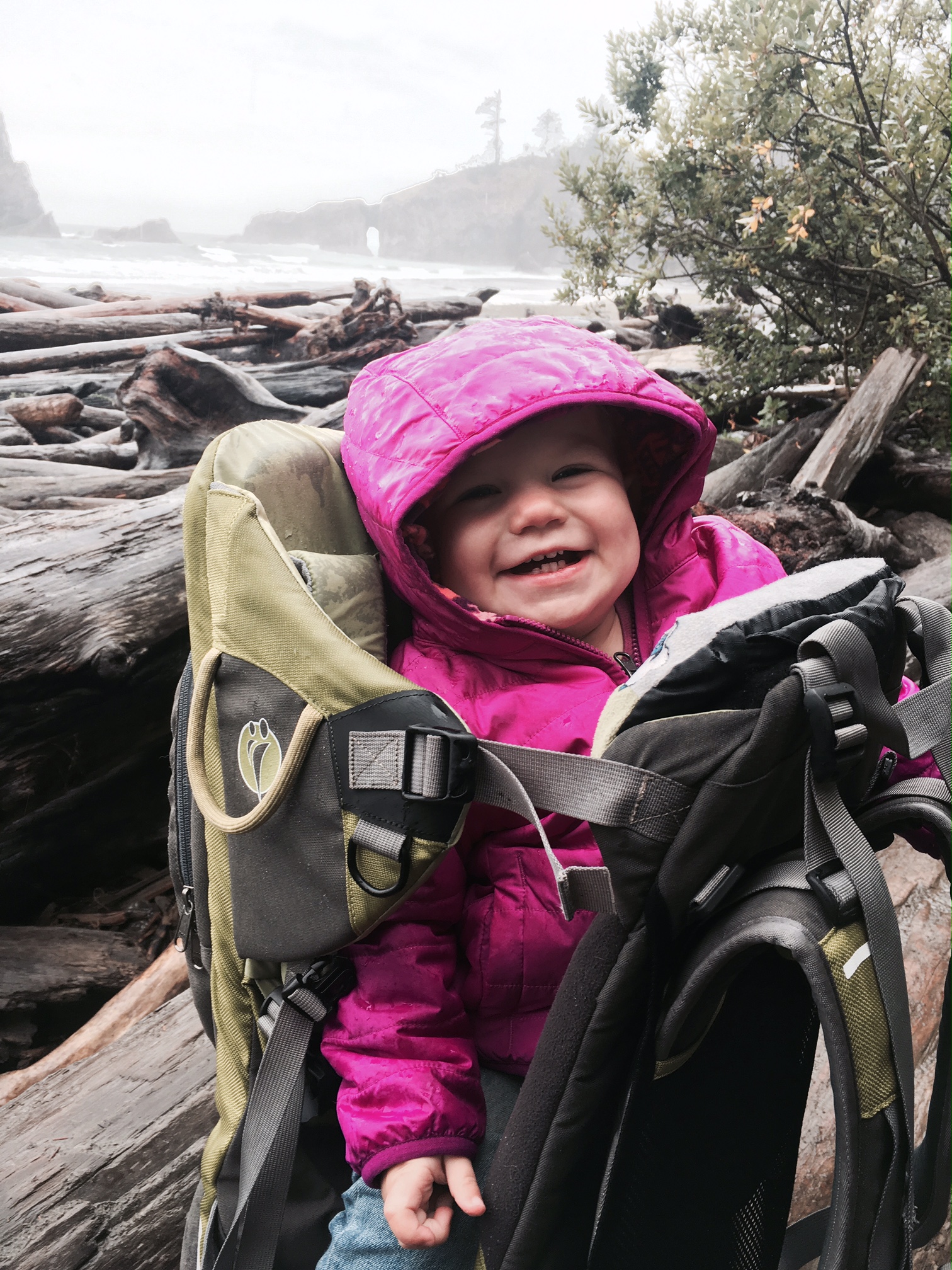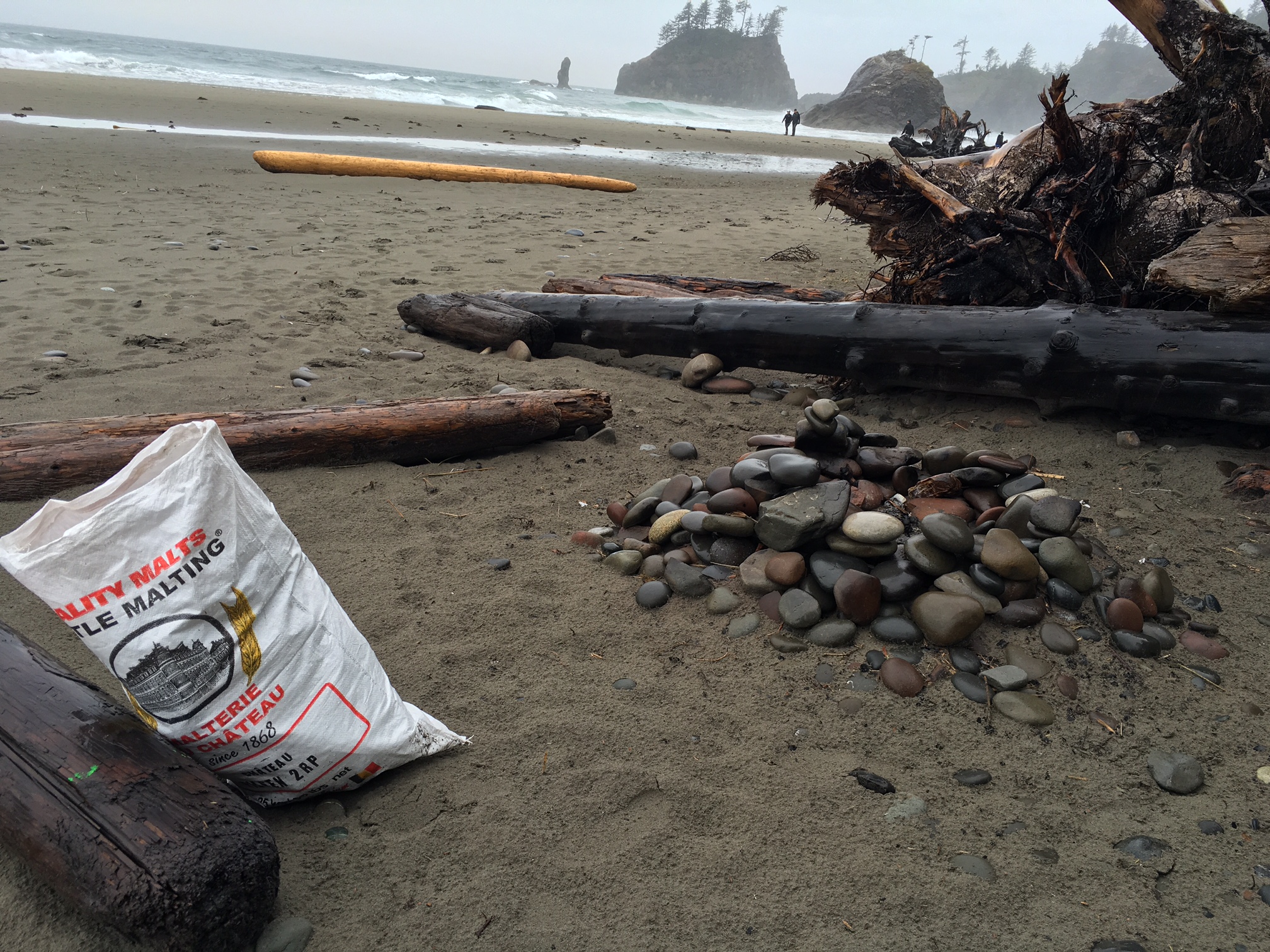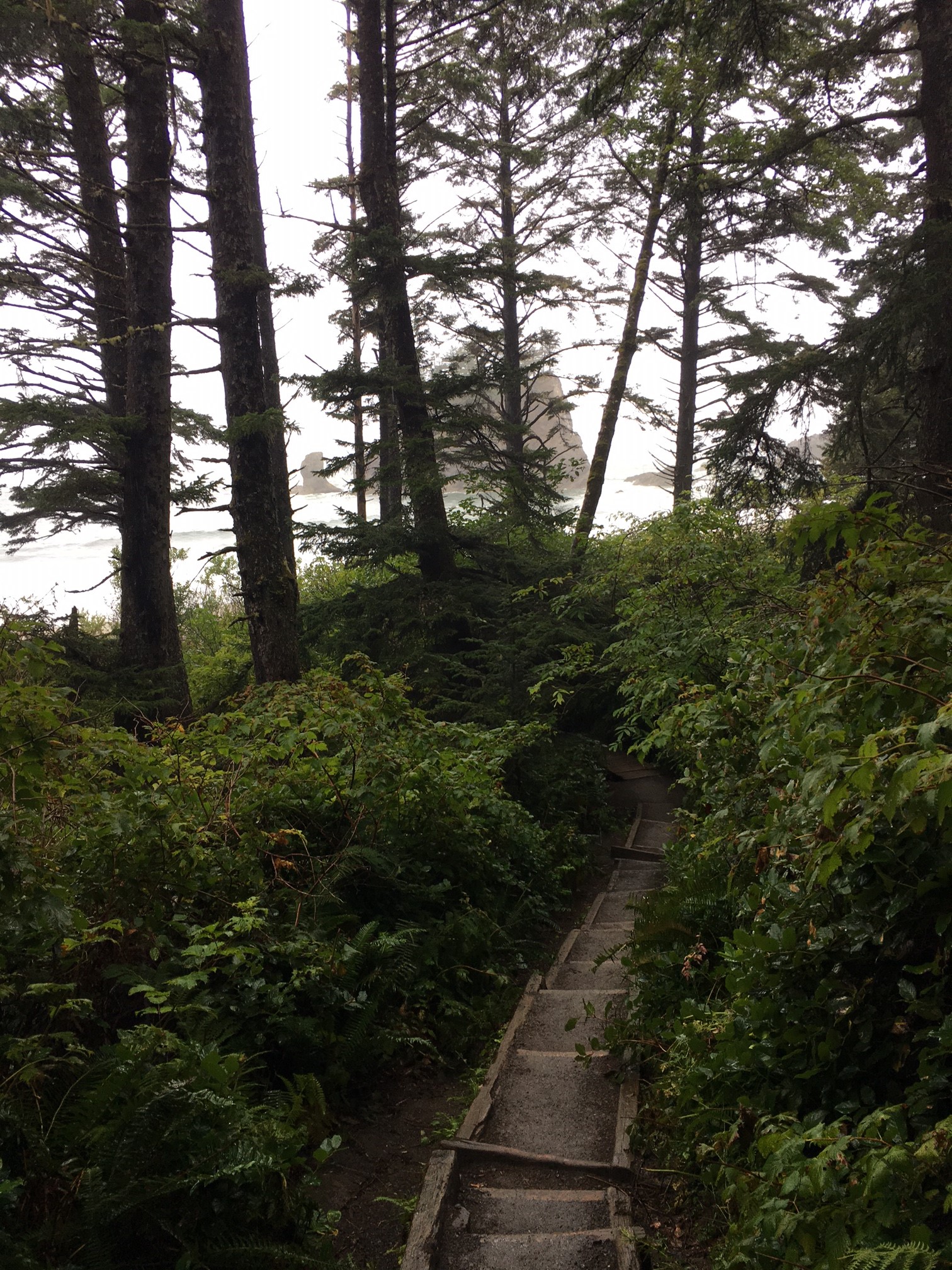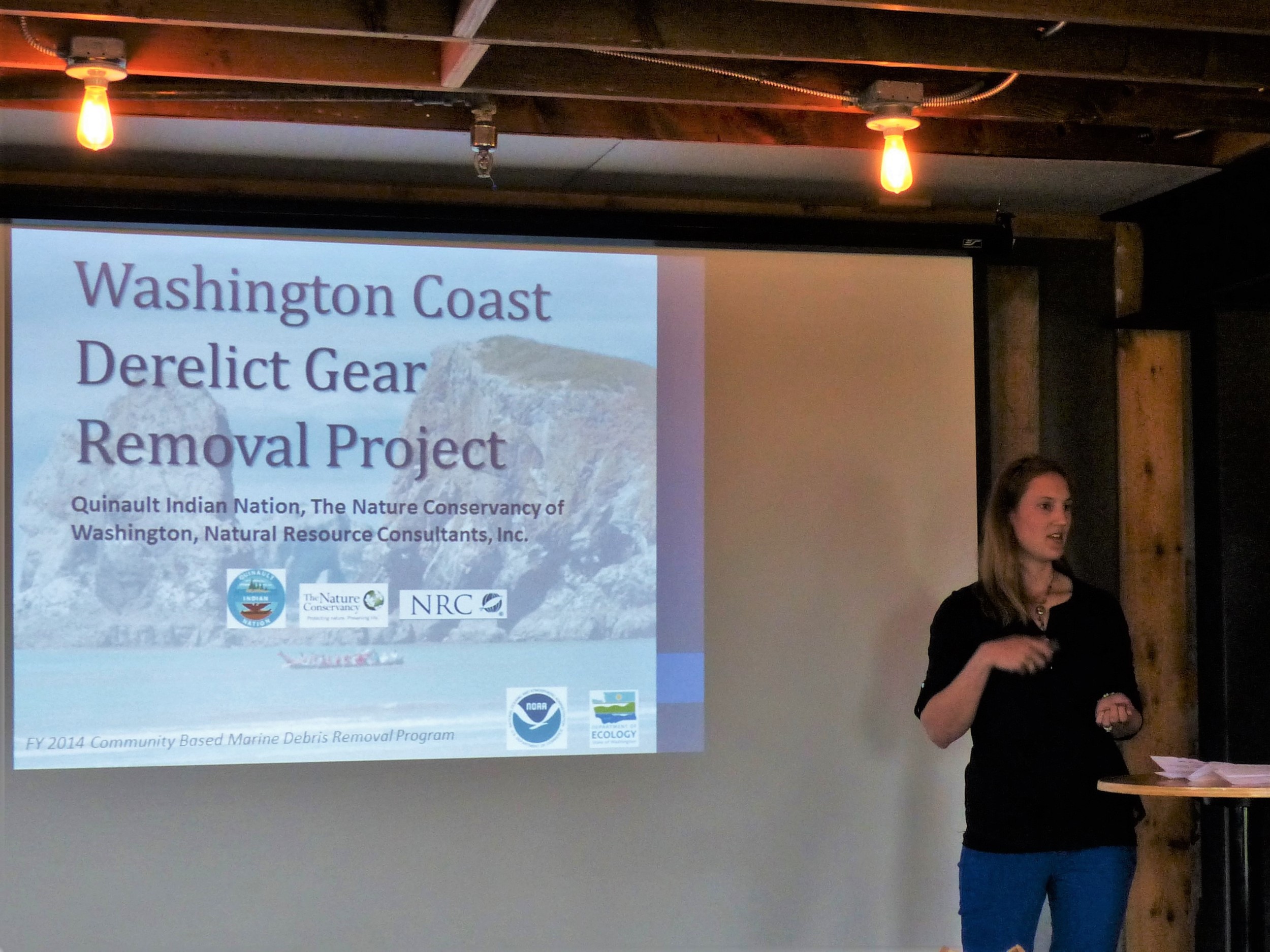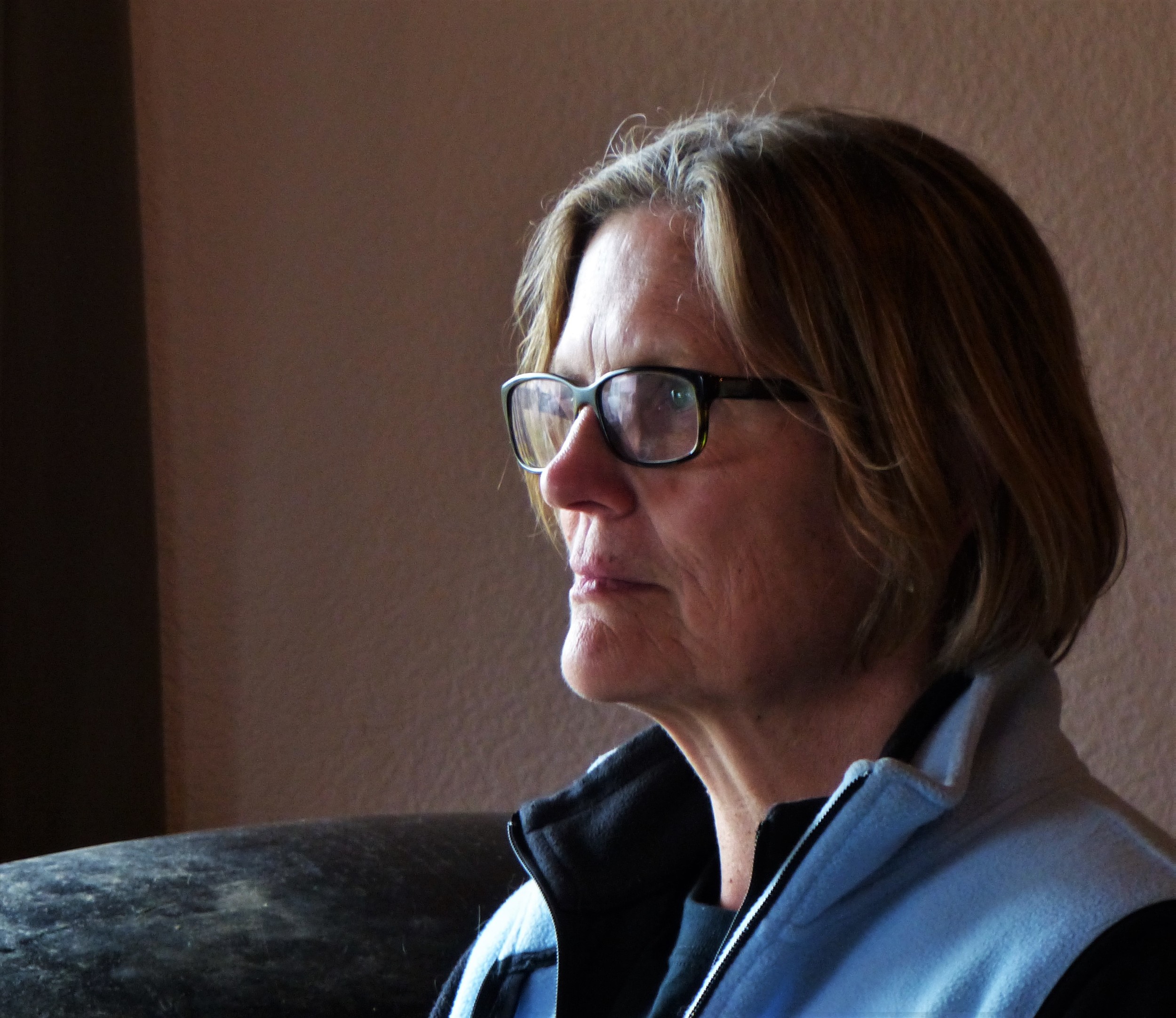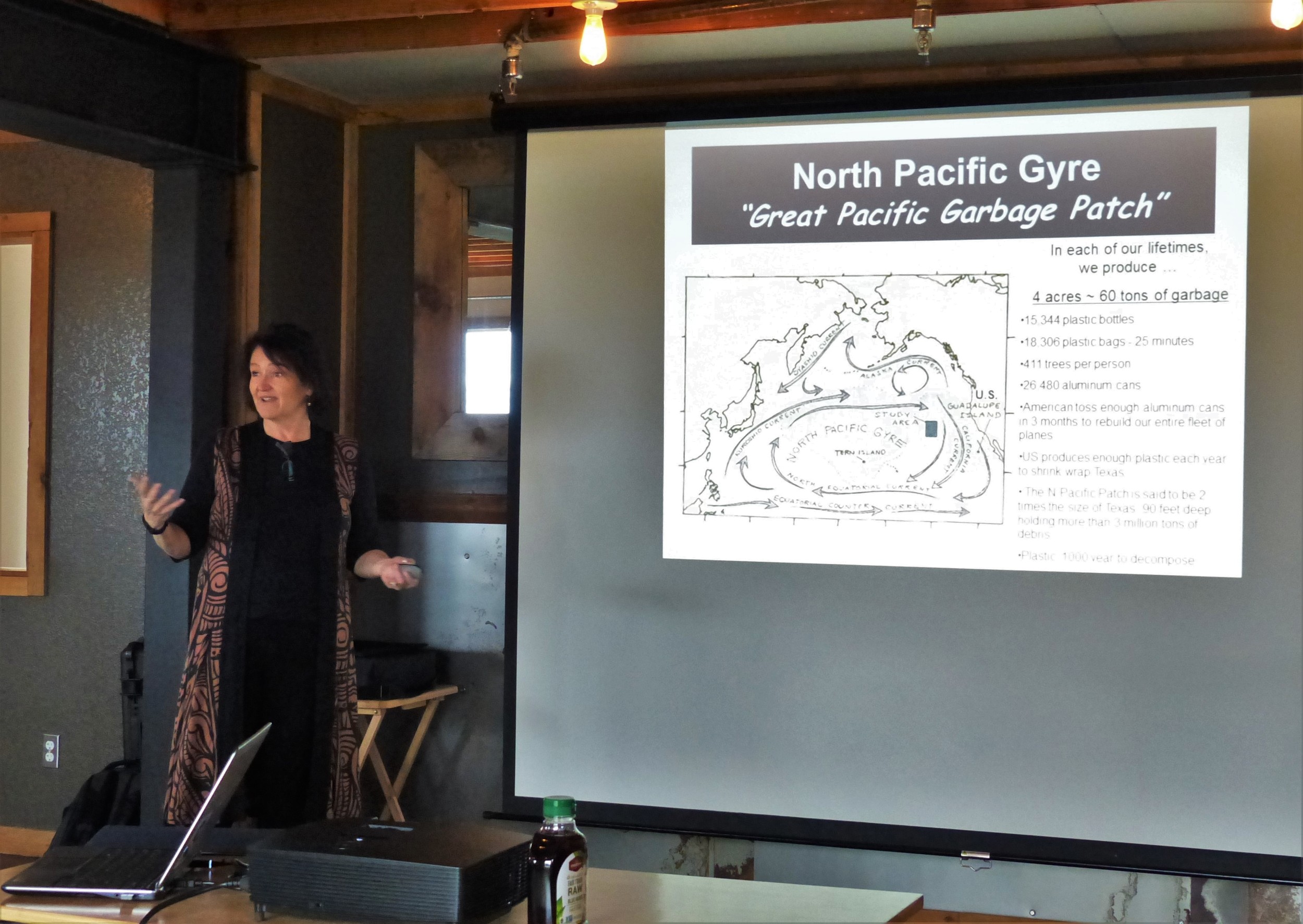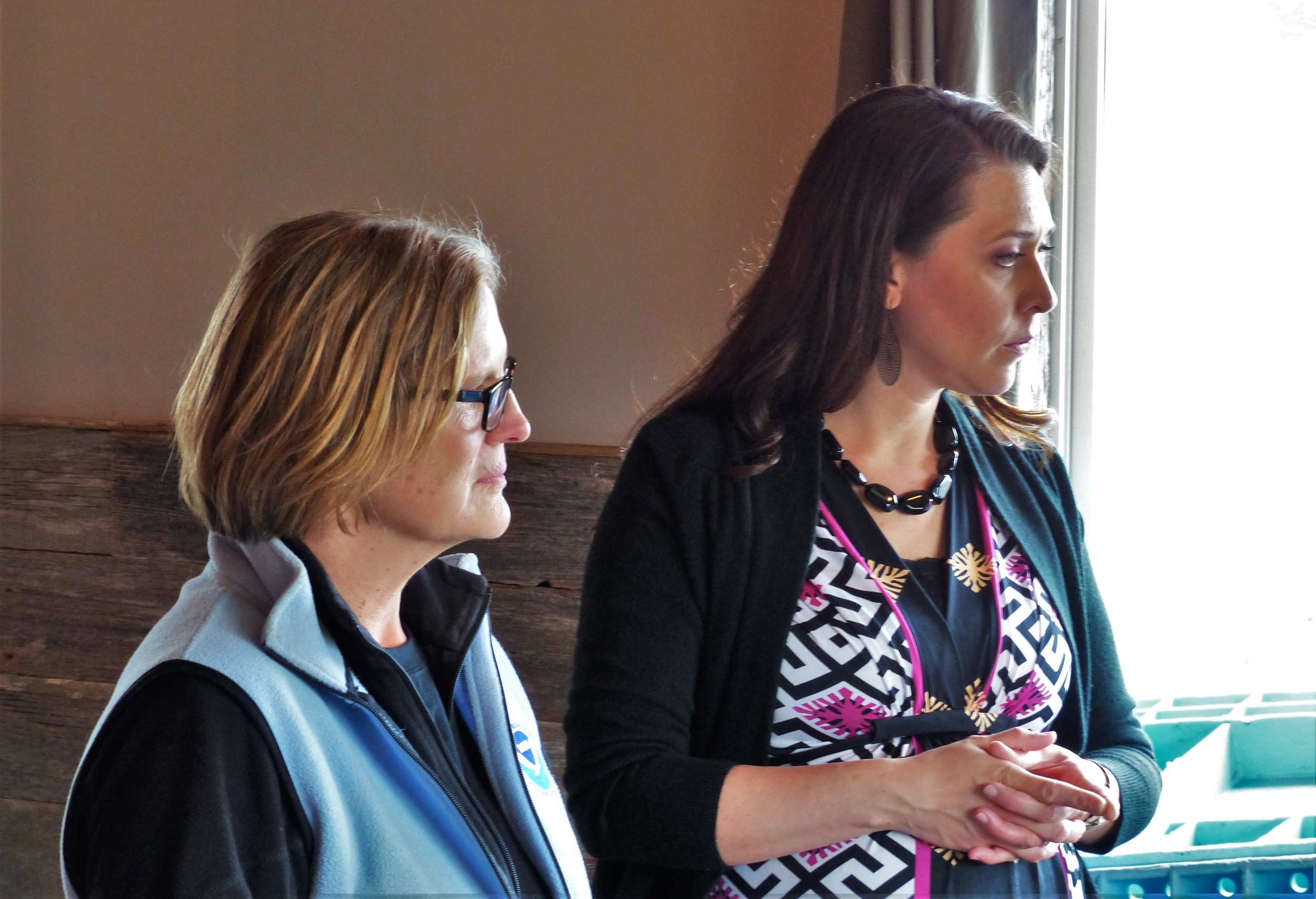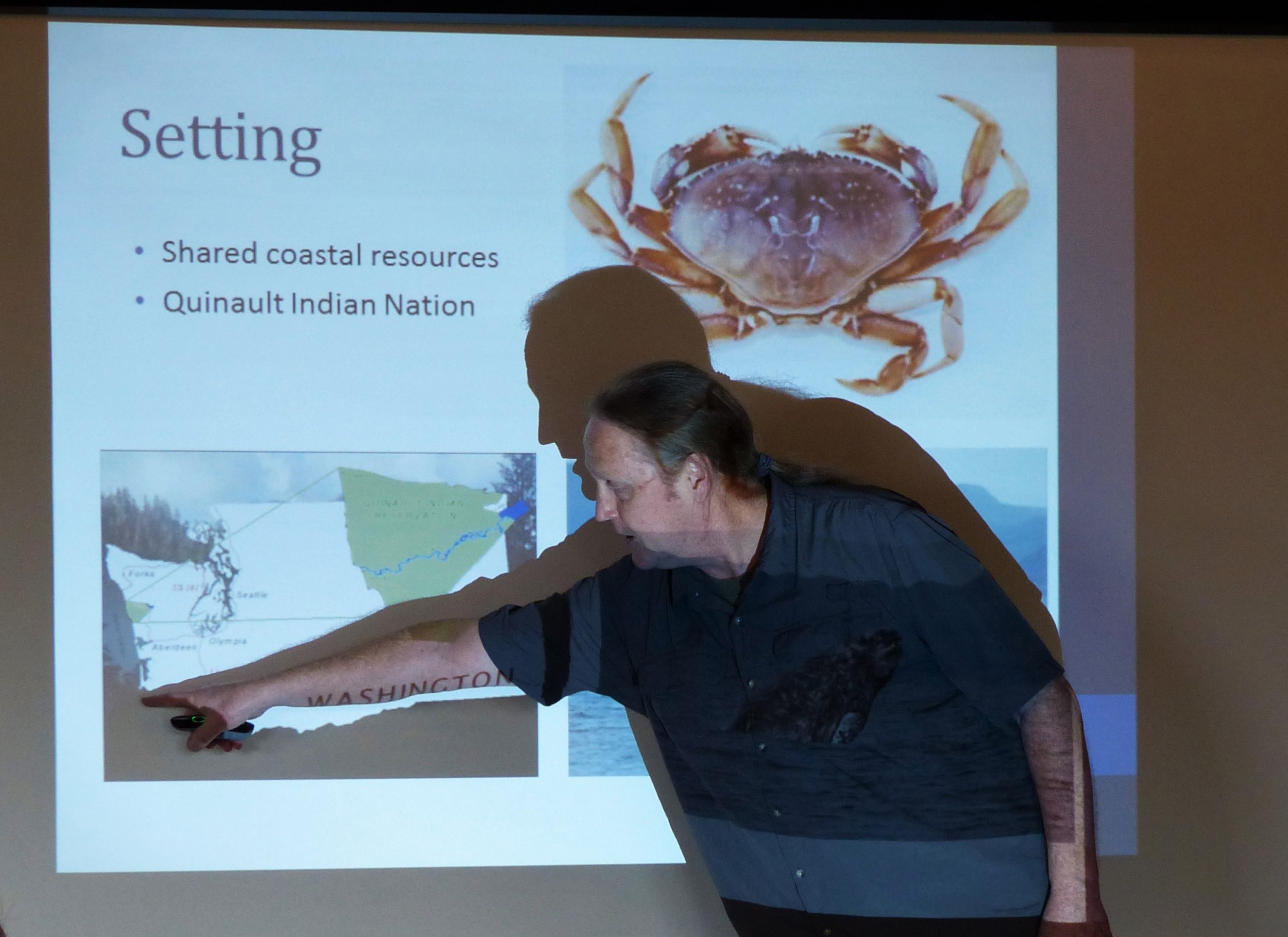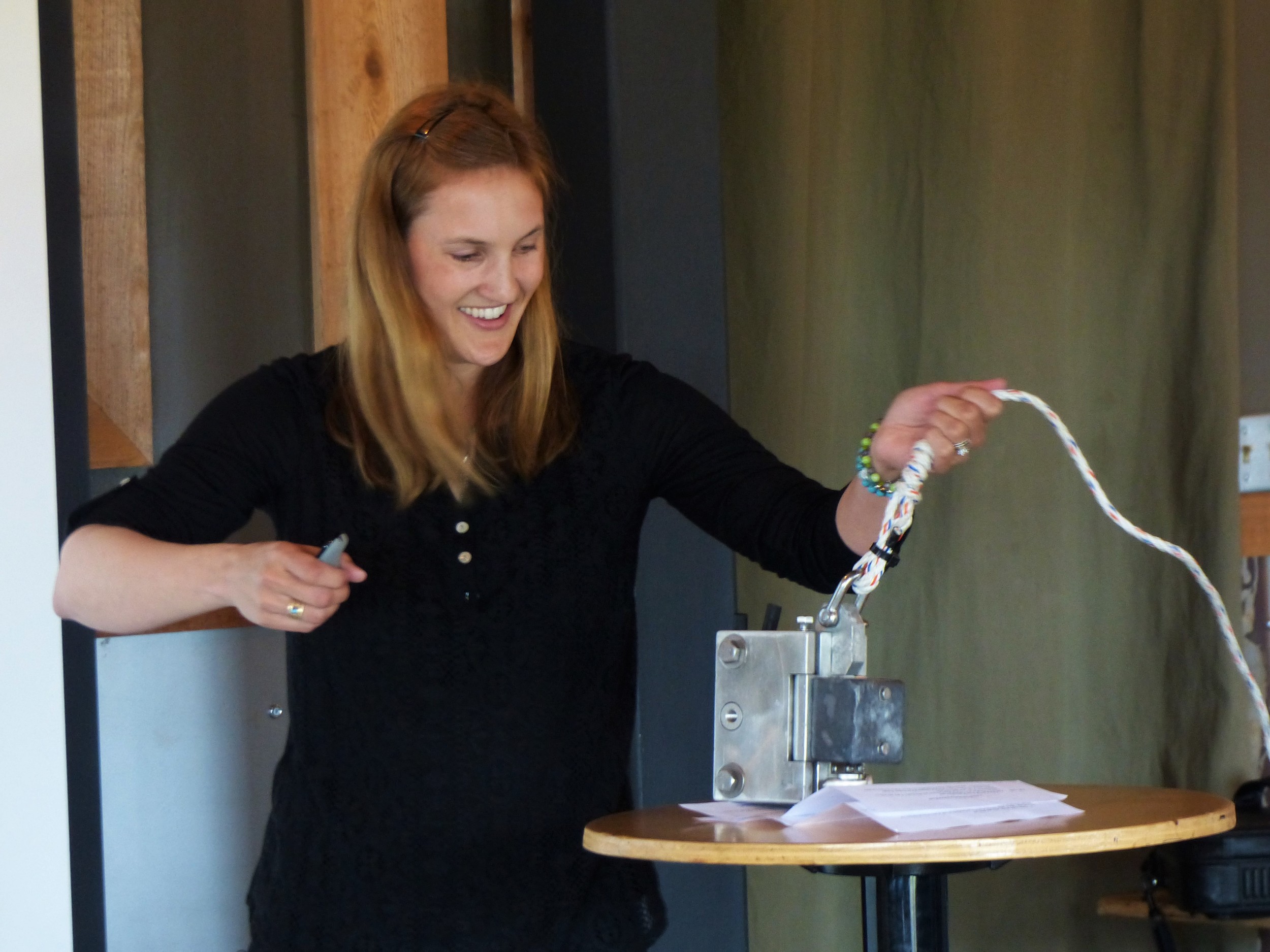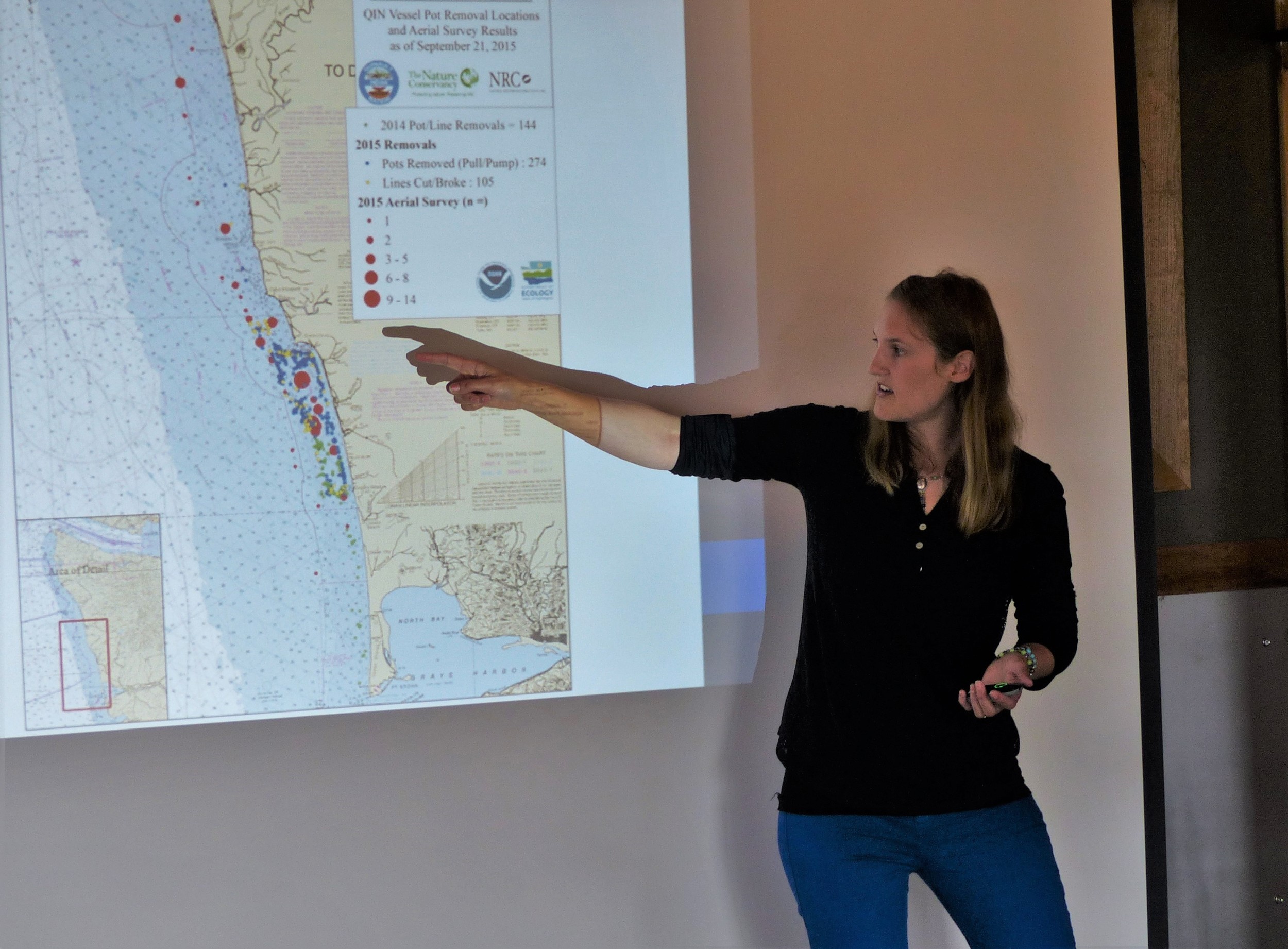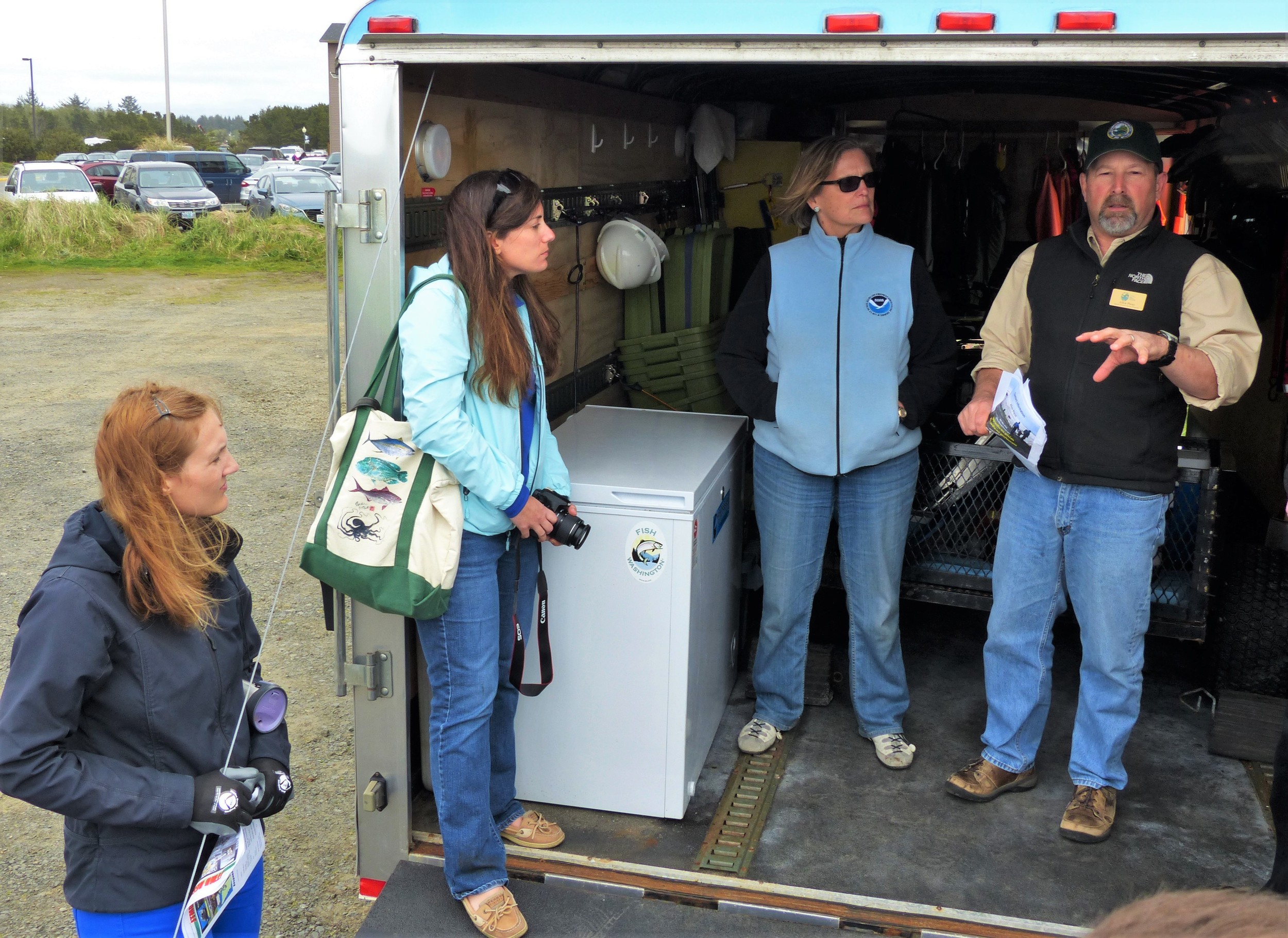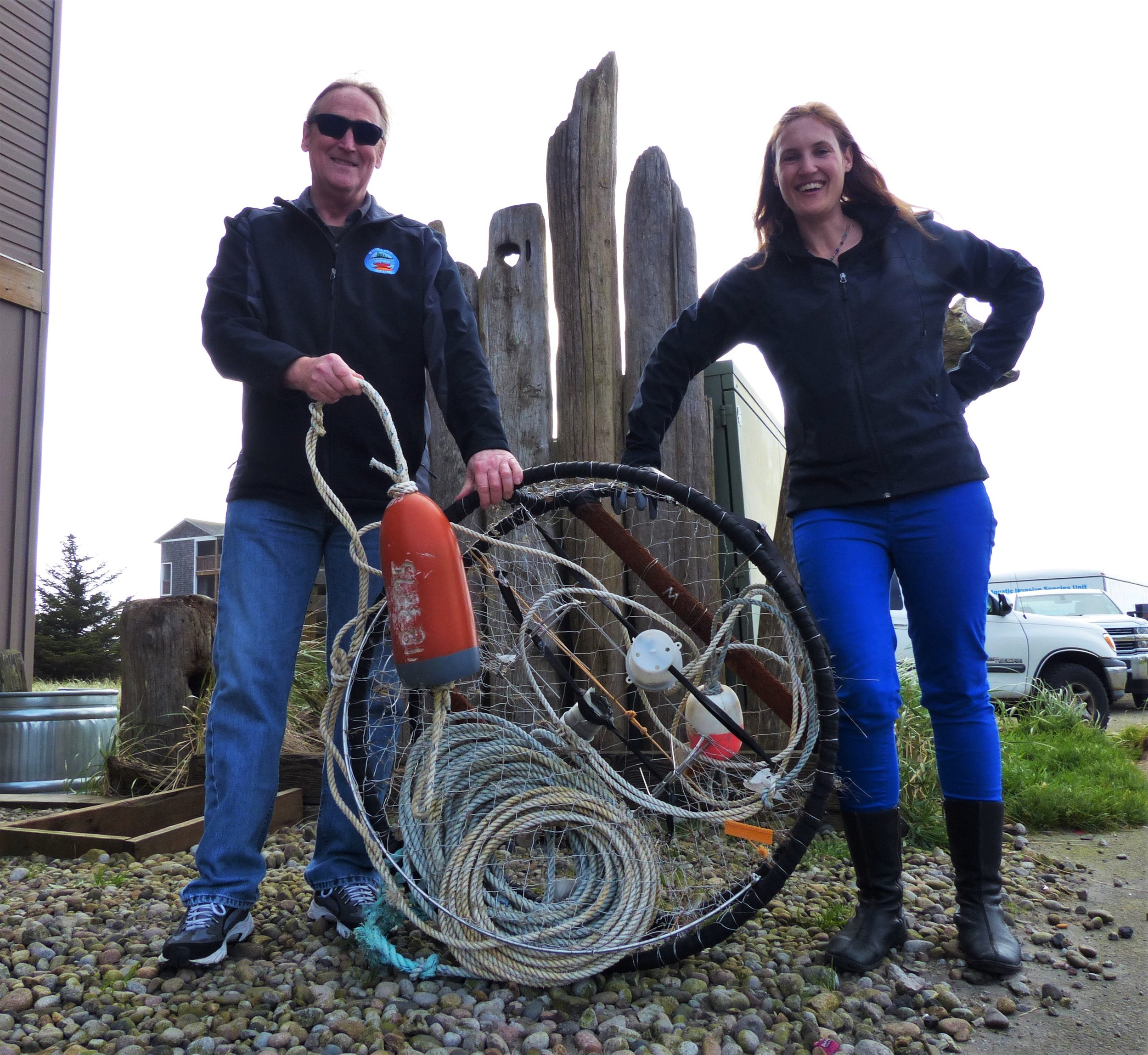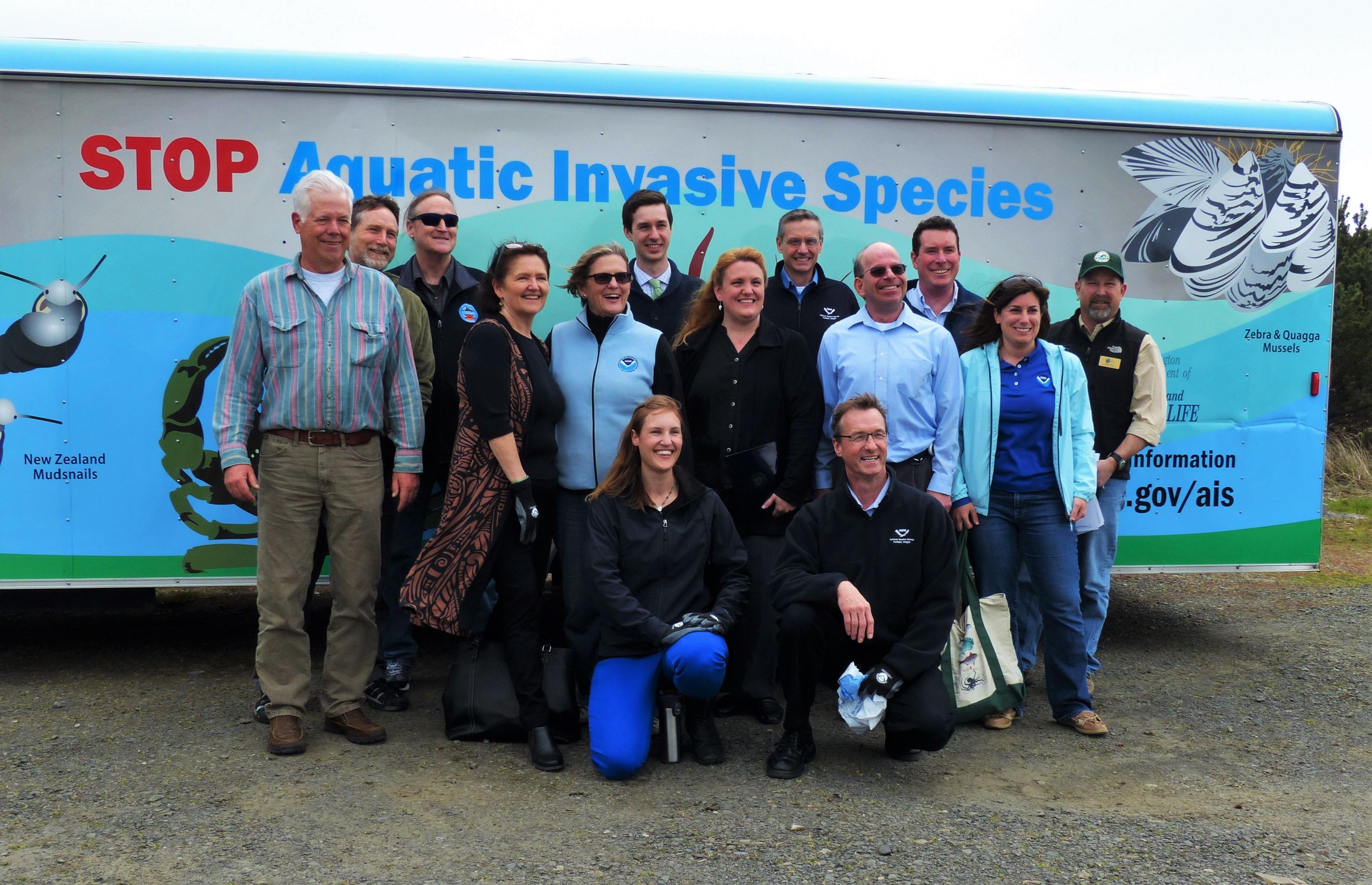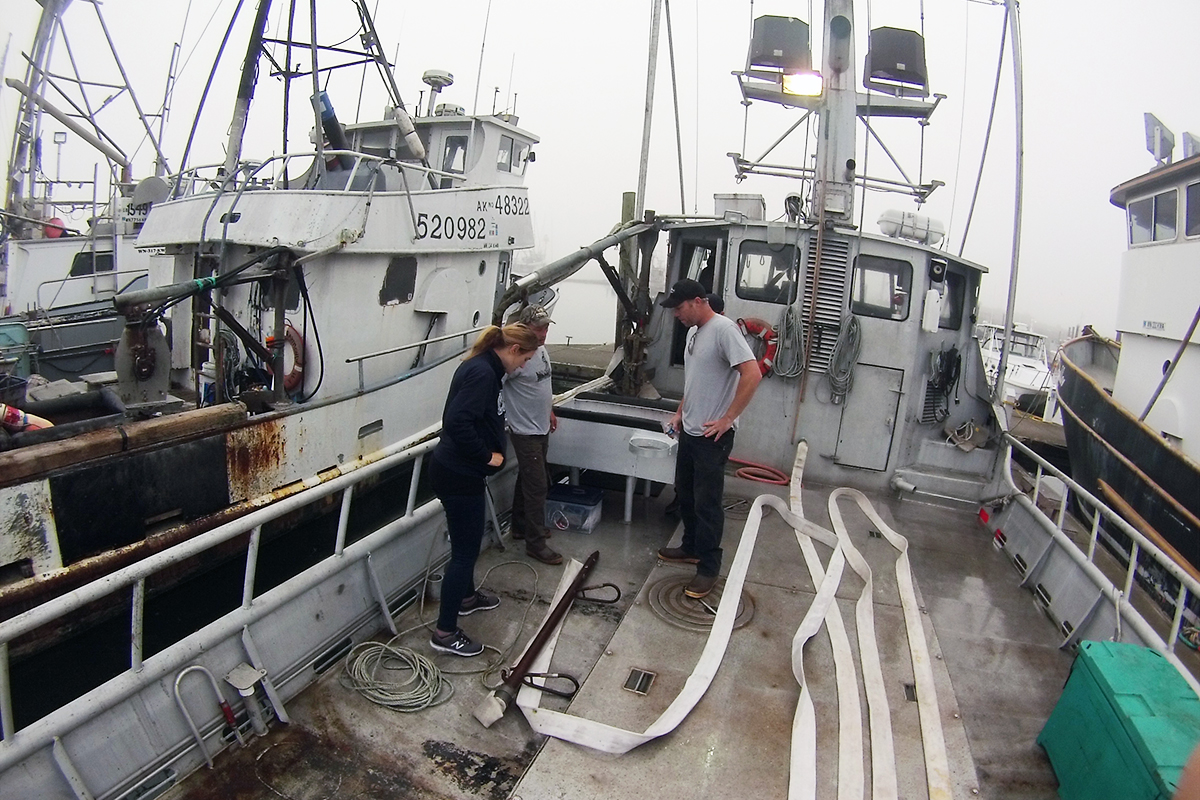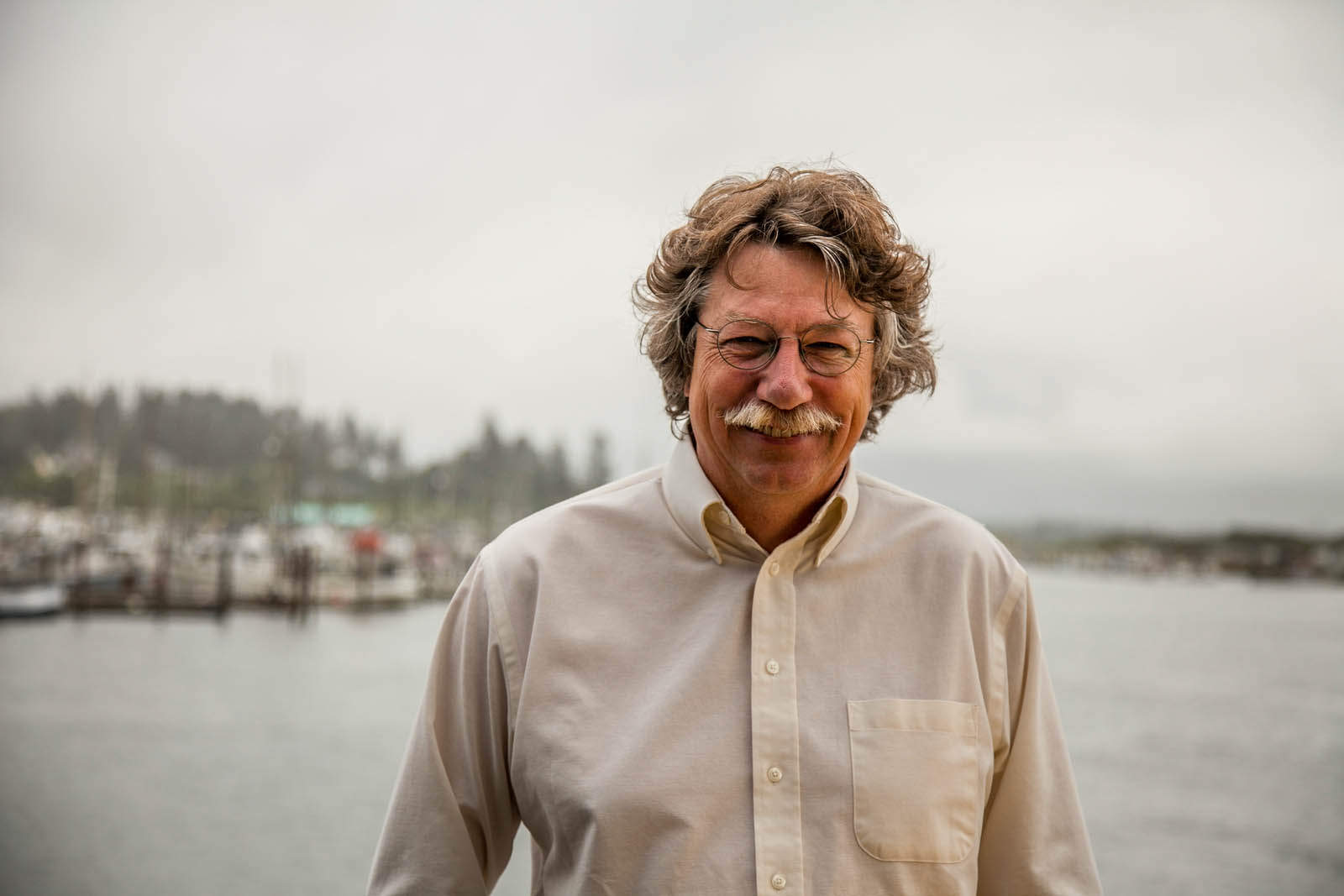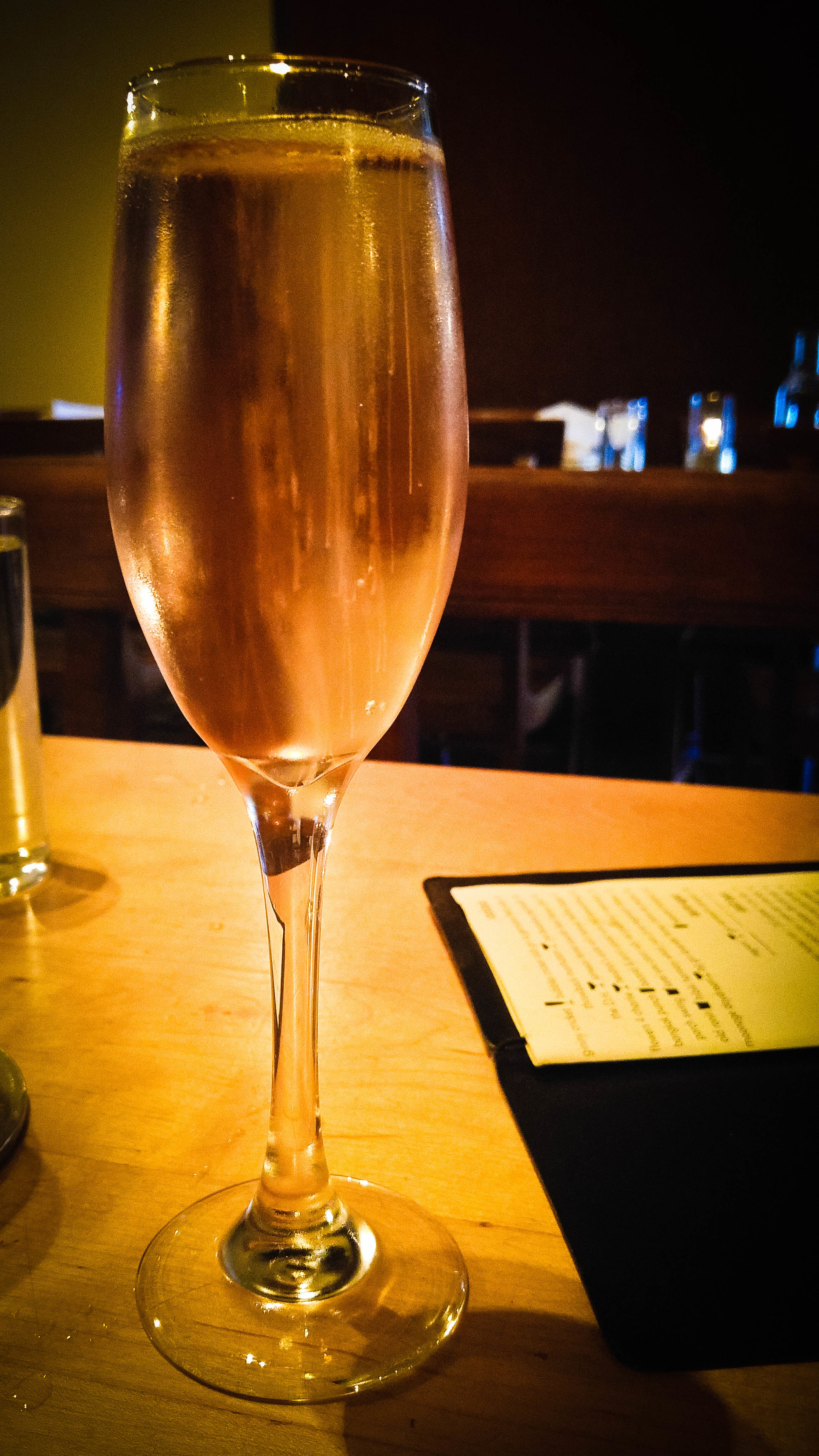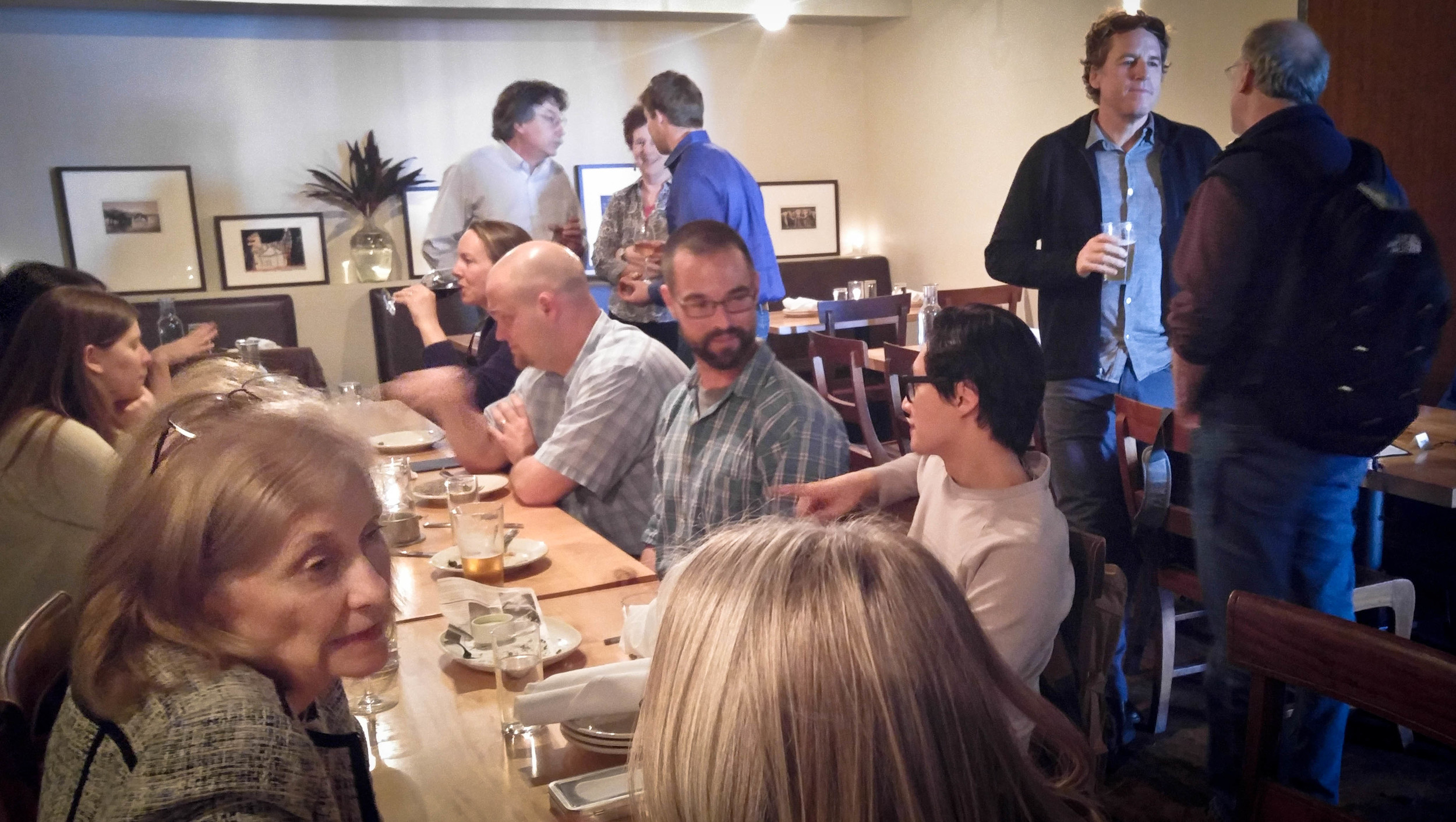The Nature Conservancy is seeking a contractor who will conduct a review and market analysis of the current commercial fisheries along Washington’s Pacific Coast to identify potential opportunities to increase sustainable fish markets. Proposals due Sept. 4, 2019
Shellfish Growers Bring Pearls of Wisdom to Combatting Climate Change
Studying Sustainable Seafood in Seattle
Marine Resources Committees: Diverse People, Dynamic Projects, Dazzling Potential
Microfibers: Tiny Plastics Have a Huge Impact on our Oceans
Two-Minute Takeaway: What is Bycatch?
Learn How We're Mapping Sea-Level Rise in Southwest Washington
It’s More than Counting Fish: Where Social Science Meets Sustainability
Diving Deep into Science at the Aquarium






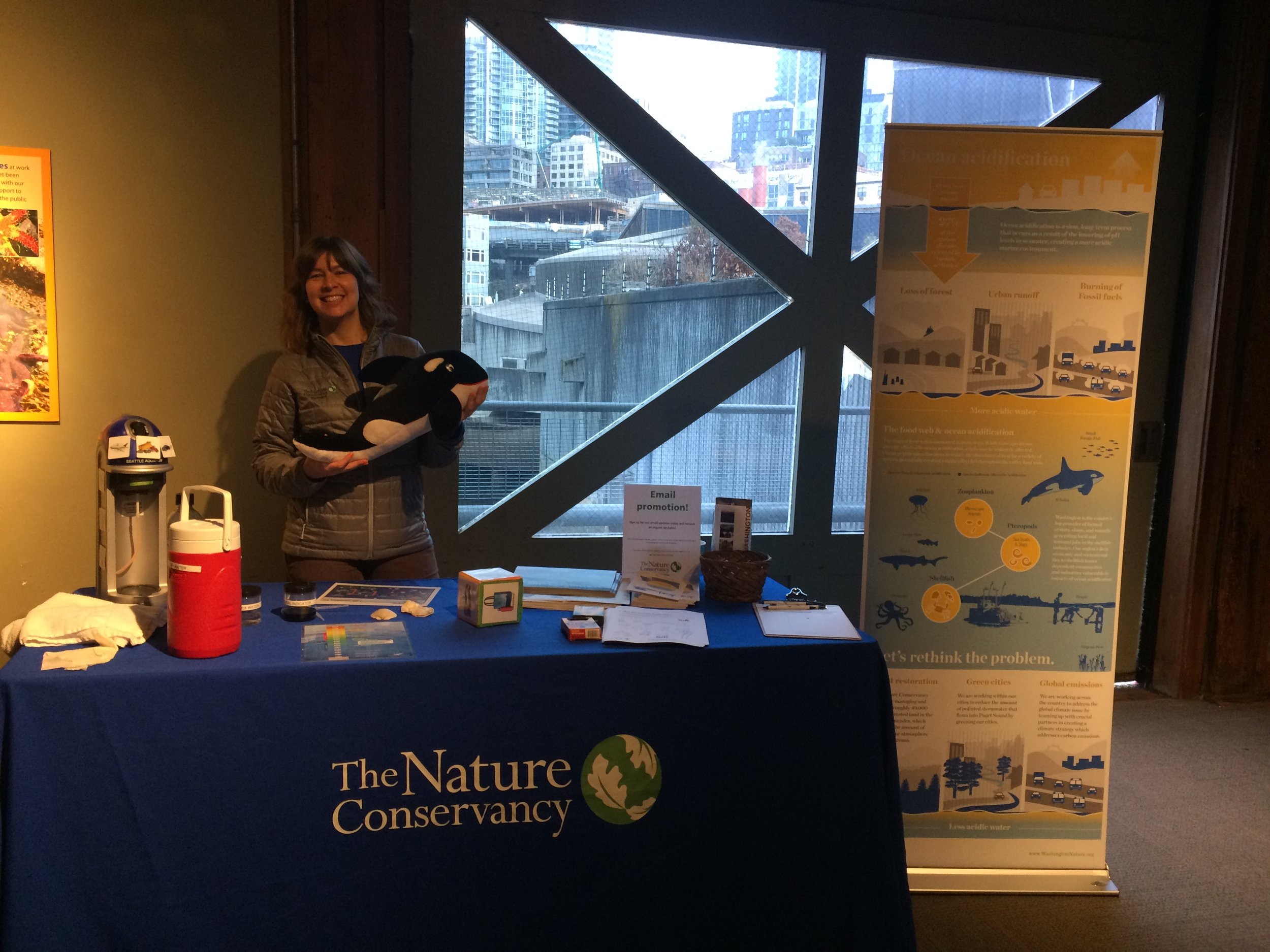

Written by Molly Bogeberg, Marine Conservation Coordinator
A few members of the TNC Team and some of our fabulous volunteers participated in three days of energetic children, ocean education, and science fun at Seattle Aquarium’s Discover Science Weekend. The weekend kicked off with an evening of Lightening Talks staring local scientists from National Oceanic and Atmospheric Administration, the University of Washington, Washington Department of Fish and Wildlife, and Vulcan Inc. Each scientist was given a mere 5 minutes to explain their research. This meant that the scientists had to be creative and quick to get their point across. It was a fun way to dabble in local research and mingle with other science nerds!
For the main Discover Science event, we had a booth to highlight our outreach materials on ocean acidification. Alongside the booth, our new ocean acidification infographic stood tall and provided talking points to help explain the complicated topic of ocean acidification, clearly. In addition to giving out our handy infographic booklets on ocean acidification to adults and coloring sheets to the little ones, we enticed kids to our table with a science experiment! Eager young scientists came with eyes bright and ready to learn.
For our experiment, we added CO2 to seawater using a Soda Streamer and then mixed in a pH indicator solution into normal seawater and the carbonated seawater to demonstrate how the chemistry of the water had been altered by CO2. With the addition of a green pH indicator, the color of the normal seawater retained the color of the pH indicator (green). The carbonated seawater, however, turned a bright orange after just a few drops of green pH indicator. We also used pH test strips to analyze the actual change in pH between the two samples. The changing color of the carbonated seawater elicited "ooos and ahhs" along with nods of understanding. You could really tell that the experiment and dialog helped the kids (and their parents) to grasp the concept of changing ocean conditions. After the experiment, we had kids roll a dice full of ways that they could help combat ocean acidification in their daily life. From civic action to walking to the farmer’s market to get groceries, the kids agreed that there were ways that they could help their favorite sea creatures!
Discover Science Weekend is my favorite outreach event that I get to participate in here at TNC. It really gives me hope to see kids excited about science and I love helping to inspire the next generation of ocean conservationists!
Learn more about our ocean work
A Rippling Effect: Ocean Acidification & Food Webs
From people to killer whales, to salmon, to zooplankton, the impacts from ocean acidification can affect a wide variety of organisms. As our oceans become more acidic, shelled organisms like oysters, zooplankton and pteropods have difficulty forming their hard exterior shell, which can lead to a decrease in their population. When populations of shelled organisms begin to decline, food for dependent species also begin to decline. Here off the shores of Washington, the Southern Resident killer whale mainly feeds on chinook salmon, eating around 385 lbs of fish a day! Where chinook salmon feed on small sea snails known as pteropods. As pteropods have already begun to feel the affects from ocean acidification, how will dependent species like chinook salmon and killer whales respond?
Explore the infographic below to see how ocean acidification affects other marine species throughout the food web.
A Shift in Our Oceans
As more and more carbon dioxide enters our atmosphere, our natural environments respond differently. Where some regions may become hotter, and others may become cooler, our oceans become more acidic. Explore the infographic below to learn more about ocean acidification and how a small shift in ocean chemistry has a big impact for our marine organisms.
Inforgraphic created by Erica Simek Sloniker, GIS & Visual Communications
From Trees to Seas: Marine Team Visit Ellsworth Creek
Written and photographed by Claire Dawson, Hershman Marine Policy Fellow
On our way to the Marine Resource Committee Summit in Long Beach, Washington, several members of the Marine Team here at The Nature Conservancy got the chance to visit forester, Dave Ryan, at Ellsworth Creek Nature Preserve. This 7,600 acre preserve encompasses an entire watershed, and links with the Willapa National Wildlife Refuge. Together these provide more than 15,000 acres of refuge to species like nesting marbled murrelets, cougar, black bears, elk, amphibians, and salmon.
Our visit began with a tour of the recent log jams that have been installed upstream on Ellsworth Creek. These jams, while appearing to be no more than piles of brush and logs thrown haphazardly across a stream, are in fact an important natural feature of creeks and rivers. For decades, woody debris was removed from rivers and streams to promote navigation, recreation and beautify river beds. However, recent research has shown us that removing debris is detrimental to fish habitat. Recent creek restoration efforts have therefore focused on rebuilding these essential features.
By forcing the water over, under and around them, log jams slow the water and allow historical flood plains around creeks and rivers to fill and pool with water, providing a more favorable environment for returning adult salmon and growing fry. Slowing water flow also allows the deposit of larger sediment like rocks and rubble further upstream, creating the habitat needed for salmon to build redds and lay their eggs. These newly established woody areas also lower stream temperature by providing shaded environments, and somewhere to hide. Properly engineered, they also serve to reinforce creek beds, preventing erosion.
The Ellsworth Creek Preserve also encompasses an area of old growth Sitka spruce and Western red cedar. Following a one-mile trail down into the valley, we walked among giants, some over 800 years old to what’s known as Ellsworth Beach. With the recent rains and cooler weather, the group had hoped to see that the Chum had arrived in this part of the creek. Alas, the Chum prefer to arrive in solitude, and waited until the following day to show up in droves.
Our visit to Ellsworth served as a wonderful reminder of the interconnectedness of nature – and the various elements that work together to create habitat that is ‘just right’ for some of our region’s most beloved species. Conservation progress has implications far beyond the lands we walk on, and progress made on land has rippling effects all the way out to the deep blue sea.
Visit Ellsworth Creek Preserve
A Message from the Sea
"I need the sea because it teaches me…
I move in the university of waves…
It’s ceaseless wind, water and sand…
I became part of its pure movement."
(from Pablo Neruda's The Sea)
Written by Phil Levin, Conservancy Lead Scientist
I first read Pablo Neruda’s poem The Sea as a graduate student while working on Appledore Island – a little island one mile long and one-half mile wide, ten miles off the coast of southern Maine. It was one of those perfect stormy, gray days that was amazing to watch, but much less fun to be out in a small boat doing research.
Looking out at the swell rolling in across the Atlantic, Naruda’s words were etched in my mind. Neruda captures so well a feeling of motion that anyone of us who spends time around the ocean experiences. The tides ebb and flow, waves slap ashore, and currents stream by. But its more than that – the sea’s animals are in motion too. Salmon that began their life hundreds of miles inland swim past us on their thousands-of-miles journey through the Pacific. Humpback whales, which we are seeing in the Pacific in ever-increasing numbers, can travel more than 13,000 miles in a year. And Steller sea lions make phenomenal dives to depths of up to 1,500 feet to feed, staying underwater for as long as 16 minutes.
A few years ago a 14 foot pregnant six-gill shark washed up dead in South Puget Sound. My team from NOAA took samples from the animal and found that its tissues were laced with a form of the pesticide DDT that we know was used only in California more than 40 years ago. Pesticide that a farmer had sprayed decades ago on a field 1,000 miles away had just washed up on a beach only a few miles from my Seattle home.
The ceaseless movement of water and animals connects us. It connects land and sea, sun-drenched shallows and dark ocean depths, distant continents and even time.
But as much as the ocean is about movement, we also turn to the sea for a sense of stillness. And stillness, it turns out, characterizes the lives of many of Puget Sound’s fishes.
Some of you may know one of my favorite fish: the lingcod. Besides being delicious, they are an important top predator in Puget Sound; on average, only killer whales are higher on the food chain in Puget Sound. But what else do we know about them? For properly managed fisheries, it is essential to know where fish live, what habitats they use and how far they travel.
To get at this, NOAA captured fish and inserted tiny transmitters into their bodies. We could then track their movement day and night for months. We were amazed to learn that they hardly move – if they lived on a football field, their whole life would take place in the red zone of a football field between the 20 yard line and the goal line. A full-grown lingcod is half the size of a full-grown human; imagine if you spent your entire life – working, meeting friends, finding food, eating, everything – in an area the size of half a football field.
This isn’t something that is unique for lingcod. The same is true for many fish, including yelloweye rockfish and bocaccio rockfish that live right here in Puget Sound – and are on now the Endangered Species list. In fact, when we look at fish overall, we see that, despite some fabulous exceptions like salmon, fish have the smallest home ranges for their size of any vertebrate animal. A raccoon in the city has a home range of about 28 football fields, or 140 times the home range of a similarly sized lingcod.
Why does this matter? In the early 1980s, rockfish were not really fished commercially in Puget Sound, and some fisheries managers thought they would be a great resource to exploit. Rockfish are a mild, tasty fish and they quickly became popular. The rockfish fishery boomed – you could even see an explosion of rockfish recipes in locally published cookbooks. But fisheries managers didn’t know that rockfish do not move much, and they did not know they grow slowly, mature late and have long lives (yelloweye rockfish can live for 200 years!). All this means that rockfish are easily overfished. About ten years after the Puget Sound fishery boomed, it was shut down. After ten more years, three Puget Sound rockfishes were on the Endangered Species list.
So, many fish basically stay home their whole lives. These fish can’t escape the effects our activities have on their homes.
New brain research is showing that our brains are hardwired to react positively to the ocean, and that being near it can calm and increase innovation and insight. It’s not surprising, then, nearly three billion people globally live within 60 miles of a coast, or that population growth along coasts is six times greater than inland areas.
As more and more people come to the shore to seek solitude and inspiration, we must let the sea teach us. Let it remind us that we are connected – that how we act transcends space and time. And for animals that can’t just get up and relocate, the consequences of our actions can be dire or provide solutions that make our piece of the world a better place.
Learn more about our Ocean Work
International Coastal Cleanup Day
Written & photographed by Kara Cardinal, Marine Projects Manager
“In fact, the ocean is the cornerstone of the systems that sustain us – every breath we take is linked to the sea.” – Sylvia Earle
It was my daughter and my first solo hike on the coast. We walked the drizzly path through the craggily, windswept trees towards the ocean. We were actually passing through what is known as the Pacific temperate rain forest, where enchanting trees grow tall and are covered with lush, green mosses and ferns, and where the forest kisses the coastline of the mighty Pacific.
As the colors change from deep green to a misty gray and the air grows thicker with salty mist, we know we are near the edge of the ocean. We are actually here as part of the annual International Coastal Cleanup put on by Washington Coast Savers, as well as other partners including the Surfrider Foundation, the Olympic Coast National Marine Sanctuary, the National Parks Service and many others. This effort is part of a larger movement to reduce the amount of marine debris in our oceans, which can be found in form of tiny plastic nurdles, to plastic bottles and bags, to derelict fishing gear. Marine debris is a global problem that threatens oceans and coasts, marine life, our economy, safe navigation, and human health and safety. The Nature Conservancy is doing our part to reduce marine debris through our derelict crab pot removal projects with the Quinault Indian Nation and the Quileute Tribe.
We emerge through the trees, scramble over the soggy drift wood, and there it is – the Pacific Ocean. That first sight and first deep breath inhaled from the sea will never grow old. Every time I come here I think to myself how lucky am I? How lucky am I to live here and how lucky am I that I get to devote my life to taking care of this precious resource?
We pull out our trash bag and begin our service – bottle cap here, styrofoam there, a straw almost invisible amongst the riprap at the tide line. Many people engage us in conversation, curious about what treasures we are collecting. When I tell them it’s trash, they look a bit confused until I tell them about this larger effort.
We stumble upon a sea star that appears to have suffered from the Sea Star Wasting Syndrome and we stop a moment to admire the beauty that it once was. A little girl sees me looking at it. In a language I don’t recognize, she excitedly calls her family over to look at this wondrous creature. To her it was perfect, and I imagine it will be a cherished memory she will nostalgically look back on years from now on her trip to the iconic Washington Coast. Because that’s what the sea does – once you experience the magic of this place, it becomes a part of you.
As Marine Projects Manager for the Nature Conservancy in Washington, I get to participate in many different forms of ocean conservation – from protecting the habits and sustainable uses along the Washington Coast through our involvement in the statewide Marine Spatial Planning process, to working with fishermen on sustainable fishing gear . But the aspect I love most about my job is working alongside the people that truly love the ocean as much as I do – from the fishermen, to surfer, to the scientist to the little girl so fascinated by the sea star.
Learn more about our work in the Oceans
World Oceans Day Instagram Meetup
World Oceans Day was the perfect opportunity to get outside, enjoy nature and make a difference. We joined our local instagram community by celebrating our oceans and enjoying an amazing sunset along the Washington coast at Ruby Beach. Check out some scenes from the day in the video above!
Learn about our work along the coast and the science-based strategies that will help ensure healthy and productive oceans.
Hello, Fellow Fellows
Written by Melissa Watkinson (2015-16 TNC Hershman Fellow), Mike Chang (2015-16 Makah/TNC Hershman Fellow), and Kara Cardinal (Marine Projects Manager)
It’s no secret that The Nature Conservancy has many partners across Washington State and the Pacific Northwest. One partnership that has furthered The Conservancy’s efforts in marine and coastal work, and builds on the legacy of Washington’s leadership in the development of sound policies for the conservation and use of ocean and coastal resources is with Washington Sea Grant’s Marc Hershman Marine Policy Fellowship program. The program matches outstanding, highly motivated marine science, law and policy graduate students with agency, NGO and tribal host offices, offering each fellow first-hand experience in crafting policies and enabling fellows to share their academic expertise with state decision-makers. The program is named after Marc Hershman, a leader in the study of ocean and coastal policy for 30 years, who passed away in February 2008. Dr. Hershman served in several marine leadership capacities and played a key role in efforts to develop more comprehensive and coherent policies for Washington’s coasts. The facilitation and support of the Marc Hershman Marine Policy Fellowship program is an outstanding example of the commitment to education and outreach by Washington Sea Grant.
The opportunity to host a Hershman fellow has strengthened The Conservancy’s ability to achieve its goals to conserve marine habitats and support healthy and sustainable communities and, at the same time, educate and empower the next generation of environmental leaders. This year the fellowship program has brought in its fourth generation of Hershman fellows to The Conservancy. Each fellow has worked closely with the marine team to tackle projects addressing marine conservation and stewardship, and has continued to work with the Conservancy on a variety of different capacities even after their fellowship term.
Hershman Fellows at TNC have strengthened and developed an exciting breadth and depth of projects with the marine team. The Conservancy’s first Hershman fellow is our very own marine projects manager, Kara Cardinal, where she led TNC’s MSP outreach efforts throughout the Washington Coast and helped the state develop the MSP data viewer. Katie Wrubel was the second fellow at TNC and was instrumental in helping Washington Coast tribes begin their tribal marine planning efforts. Katie is now working with the Makah Tribe as their Natural Resource Policy Analyst. Molly Bogeberg, the third fellow at TNC, worked closely with coastal communities in Grays Harbor and Pacific counties to bring habitat conservation as a priority within their Shoreline Master Programs. Molly finished her fellowship last September and continued working with TNC as the temporary marine projects manager. Melissa Watkinson is the newest TNC Hershman Fellow and she is engaging with partners and stakeholders to improve project proposals and future socio-economic policy responses in relation to environmental restoration for the Washington Coast Restoration Initiative.
Starting in 2014, the partnership between the Conservancy and the Makah Tribe led to new Marine Policy Fellowship with the Makah Tribe in an effort to further joint efforts on vessel traffic safety and climate resilience. Laura Nelson, the first fellow with the Makah Tribe, worked out of Washington TNC’s Seattle office to collaborate between both entities and is currently working a marine policy contractor with the Makah Tribe. This year, Michael Chang is fulfilling this role with Makah and TNC. Laura and Michael led efforts with the Makah Tribe on issues of vessel traffic safety and oil spill preparedness, adaptation to climate change and ocean acidification and protecting treaty-rights at risk.
The Sea Grant College Program is celebrating its 50th year anniversary this year, and this month they are focused on highlighting all of their current and past sea grant fellows while also recruiting its next class of Hershman fellows. The partnership TNC has built with Washington Sea Grant and the Hershman Fellowship, and the relationships that four generations of fellows sustain, is a testament to the quality of people that TNC attracts, and is a wonderful example of the power of achieving success through strong partnerships.
LEARN MORE ABOUT OUR MARINE WORK
Cleaning Up Oceans of Debris
Written by Kara Cardinal, Marine Projects Manager
Photographed by David Ryan, Field Forester
Marine debris - plastics, metals, rubber, paper, textiles, derelict fishing gear, vessels, and other lost or discarded items that enter the marine environment – is becoming one of the most widespread pollution problems facing our world oceans.
Marine life, such as sea turtles, seabirds, and marine mammals, are increasingly confusing it with food and ingesting plastics and other debris. It can damage important marine habitat. Derelict nets, ropes, line, and other fishing gear can lead to whale entanglements, vessel damage and navigational hazards. Not to mention, who wants to walk down the beautiful Washington coast only to stumble across rafts of Styrofoam, plastic bottles and grocery bags? No part of our world is left untouched by debris and its impacts.
“She may be small, but she is fierce.”
As overwhelming as this problem seems, incredible work is happening right here in Washington to clean up our local oceans.
I had the opportunity recently to join a group of dedicated individuals in Long Beach, Washington who are working to address marine debris issues in our state, as well as recognize the 10-year anniversary of the NOAA Marine Debris Program and the five-year commemoration of the tsunami that struck Japan and resulted in vast amounts of debris from across the world washing up on our local beaches.
This event brought together local volunteers (Grassroots Garbage Gang), NGOs, tribes, state agencies and NOAA officials to share and recognize our work. The event on April 8 kicked off with inspiring remarks from Dr. Kathryn Sullivan, Undersecretary of Commerce for Oceans and Atmosphere and NOAA Administrator , who was eager to learn about our work and explore our local beaches.
Congresswomen Jaime Herrera-Beutler, with family in tow, also addressed the crowd. Referring to the community efforts on the Washington coast, she recited a quote from her daughter’s bedroom wall: “She may be small, but she is fierce.” These words couldn’t be more true – folks on the Washington coast are doing local-scale work with a global-scale impact.
At The Nature Conservancy, we are doing our part by addressing the issue of derelict fishing gear along Washington’s rugged coast. With funding from NOAA and in partnership with the Quinault Indian Nation and Natural Resource Consultants, we have removed over 500 pots, lines, and buoys from the Washington Coast. The main goals of this project can be summed up by 1) getting derelict gear out of the water, 2) keeping gear out of the water through a sustainable recovery program, and 3) doing outreach to tribal fishermen and the surrounding communities about the habitat, economic and safety issues of derelict fishing gear.
See our recent blog post on this project.
Before I started my long journey home, I decided to take one last walk along the beautiful beaches of the Long Beach Peninsula. As I was walking out towards the water, who did I see coming off the beach lugging a big bag full of trash? None other than Dr. Kathryn Sullivan herself! I went up to shake her hand and thank her for visiting our special corner of the country. She remarked “I couldn’t travel all this way and not do my part.” I smiled to myself as I continued my walk along the waters edged and felt very confident that all of us together might just make a difference in this world.
NOAA’s Marine Debris Program
Grassroots Garbage Gang
LEARN MORE ABOUT OUR WORK IN OCEANS
When The Ship Sets Sail
Written by Jodie Toft, Senior Marine Ecologist; Kara Cardinal, Marine Projects Manager
Photographed by various members of the Conservancy staff
Last week, we brought out our best marine metaphors for a send-off of our (now former) Director of Marine Conservation, Paul Dye. Paul recently joined Washington Sea Grant as the Assistant Director for Outreach. Paul was beloved across the chapter, as a leader, mentor and friend. He was wise to keep us from eulogizing him, by reminding us that "I'm Paul Dye, not Paul Dead." The evening was just right - a balance of roast and toast, with a custom-crafted song just for Paul. And in fine form, the fabulous tribute below to "Paulisms" - sayings or phrases that Paul has deployed over the years - from our Marine Projects Manager, Kara Cardinal. Thank you, Paul, to your contributions to conservation and conversation. You are already missed.
BOLD TEXT DENOTES A "PAULISM"
Alright everyone, gather ‘round as we share a few stories about the great Paul Dye. Now as much as we don’t want to believe it, it’s time to pull the rat out of the wood pile and say our goodbyes. Paul – I apologize in advance but I may step on your toes here a little bit, so just scream when it hurts. I’m not mean, I’m just crafty.
We all know you can hear the steak sizzling over at Sea Grant, but let’s not go putting the cart before the horse. Today is the cart, and we might be throwing a lot of sh*t in it this afternoon.
It’s been an exciting adventure hearing your stories about working for TNC - from the prairies of Illinois to the reefs of the Florida Keys to the rocky shores of the Washington coast. Man, with that kinda background, you must really know the ins and outs and ups and downs of TNC, or in Chicago speak, where all those bodies are buried. Sometimes hearing you talk about your times down in Key West, I often wondered to myself if your role as Director of Marine Conservation wasn’t just a stalking horse for an excuse to search for buried pirate treasures?
We’ve all learned many things from you, Paul. You’ve taught us how to run the trap lines and create change for the better.
You’ve taught us how to think big picture. To not get mired in district level mischief, but to not be afraid to throw some short circuit switches every now and then, as it never hurts to ruffle a few feathers. I don’t know what your fairy dust is, but you have made an impact on all of our lives for certain.
Now I don’t want to go being the banty rooster, but even though you are leaving, I know our team is going to be just fine without you. I’m betting on the draw here, but it seems like you may have been preparing us all along. Pushing us to dream big and believe in our innate abilities. That was your shell-game I guess, and it proved to be successful.
Well, I feel like I’ve gotten my licks in, so I will pass it on. Paul, we know that you will be our cheerleader and our catalyst. Our watchdog. Even though you will be moving on to work with Sea Grant, your spirit and your optimism will continue to be felt throughout our team and I know that together, we can create a new truth. Together we can keep reaching for that brass ring of marine conservation. And you know the old saying, you really CAN teach an old dog new tricks.
Vessel Traffic in the Salish Sea: Preparing for the Future
Written by Michael Chang
Story Map by Michael Chang (2015-2016 Hershman Marine Policy Fellow, Makah Tribe/The Nature Conservancy), Erica Simek Sloniker (GIS & Visual Communications), and Laura Nelson (2014-2015 Hershman Marine Policy Fellow, Makah Tribe/The Nature Conservancy)
The Salish Sea, a body of water between British Columbia and Washington State that includes the Strait of Georgia, the Strait of Juan de Fuca, and Puget Sound, is a region that supports the livelihoods of millions of people. Communities, tribes, and First Nations are intimately dependent on these waters for food, culture, recreation, and industry.
Every year, about 10,000 cargo ships carry hundreds of thousands of gallons of oil through the Salish Sea, creating a constant risk of oil spills in the region that could harm community and tribal livelihoods. However, an intricate network of experts from the Coast Guard, U.S. tribes, Canadian First Nations, state & federal agencies, regional non-profits, and local communities have prevented a major oil spill from occurring in over 20 years.
Recently, there have been several new proposals and developments for oil terminals that will increase the oil shipping volume by twofold. To ensure that the Salish Sea can adapt to the doubling of vessels and oil, the Makah Tribe and TNC have partnered together to organize a trans-boundary vessel safety summit in order to improve the U.S. and Canadian coordination for oil response, prevention, and preparedness.
The Nature Conservancy and Makah have created an interactive story map detailing the vessel safety system and what needs to be done to accommodate the expected increase in vessel traffic.
See the full, interactive story map on vessel traffic on oil spill preparedness and response in the Salish Sea region.
Q & A: Lingcod pots with Jodie Toft, Senior Marine Ecologist
One area of focus for our Marine Team is fisheries innovation. Jodie Toft (Senior Marine Ecologist) is leading the way on a project to develop fishing gear for cleaner catch. Historically, many fishermen along the West Coast have used bottom trawl fishing gear. Over the years, use of bottom trawl gear has resulted in substantial bycatch, or the unintended capture, of several species, and closures of large areas to fishing.
In an effort to catch the fish we want without catching those that we don’t want, The Nature Conservancy has teamed up with fishermen and scientists from the University of Washington to catch lingcod with a fishing pot instead of bottom trawl gear, and answer ecological and economic questions around using the pot gear.
Here, high school intern, Makayla Johnson, interviews Jodie Toft about the status of the lingcod pot project.
What were your first steps into becoming a marine ecologist?
Growing up, I spent a lot of time going to summer camps such as Camp Orkila in the San Juan Islands, which sparked my interest in marine ecology. On top of that, I had a sort of “know-it-all” personality and excelled in science and math. I was always asking questions about the world around me!
What inspired TNC to get involved in working with fishermen?
The fishermen knew that they needed to try out other ways to catch fish, so approached TNC based on work that we’ve done with the groundfish fishery in California. They saw TNC as a good fit because of our ability to provide capacity for science, policy and fundraising. Not only could working with TNC be good for the fishermen, but the project is well aligned with TNC’s goals for fisheries and ocean conservation.
Are there any fish that are being overfished right now to the point of being threatened?
Federal fisheries scientists assess how well several species of fish off our coast are doing. Of those species and species groups, overfishing isn’t happening because we now have strict rules in place. Overfishing, however, happened before those rules were in place, so some species are still recovering – or rebuilding – from overfishing that happened in the recent past. Rebuilding species are those, such as yelloweye rockfish, that are more prone to the impacts of too much fishing because they grow so slowly and take a long time to mature and reproduce. When too many of them are harvested, it takes a long time for the ones left in the water to replace the ones that were harvested.
Can you describe the process of designing and testing the lingcod pots?
It’s definitely been a mix of trial and error – such is the nature of experimental fishing. In the first year, fishermen worked to develop the pot, we put it in the water, and it didn’t catch enough fish. So, we changed the design of the entrances and tried again. It’s working better now, and we’re excited to keep testing it in the coming year.
What would you be doing if you weren’t a marine ecologist?
Tough question – I might be a doctor in some far off, remote place.




























